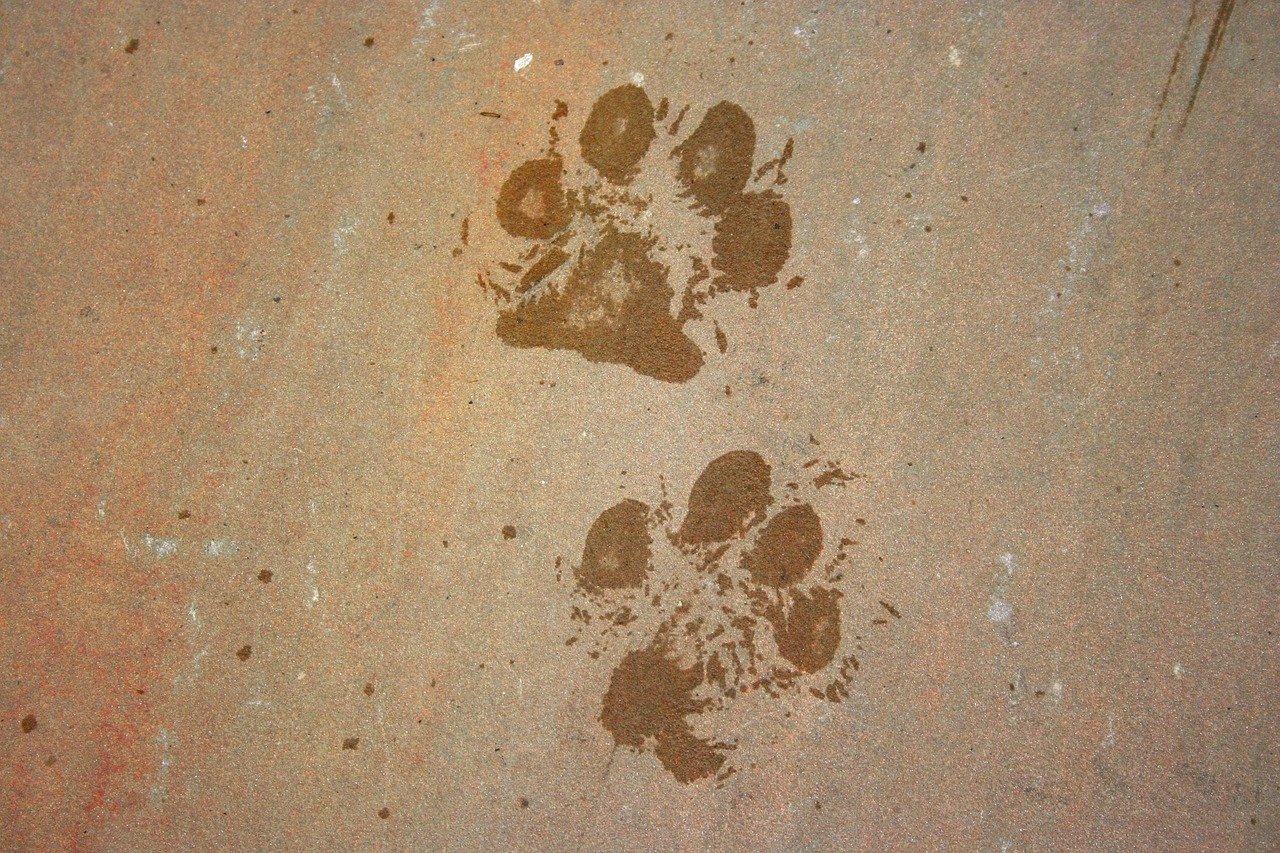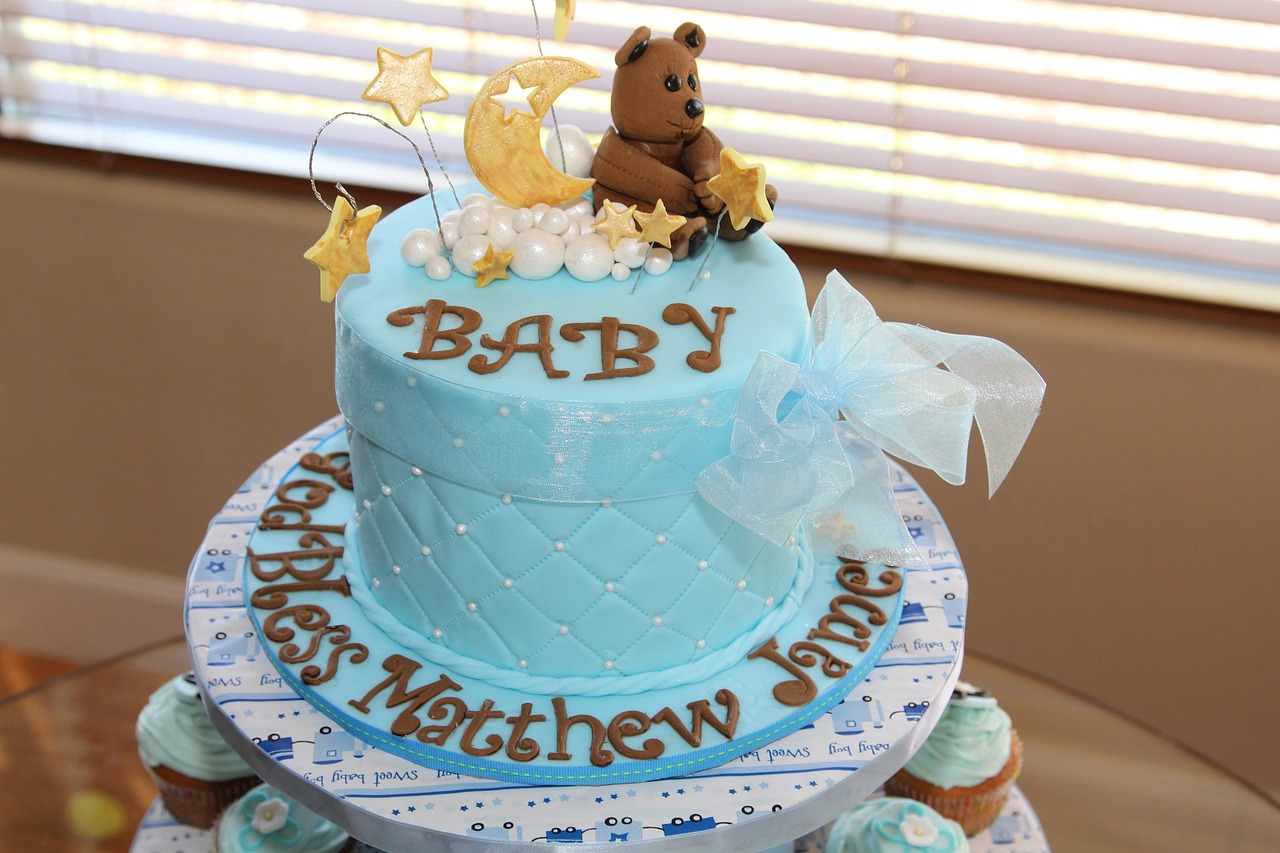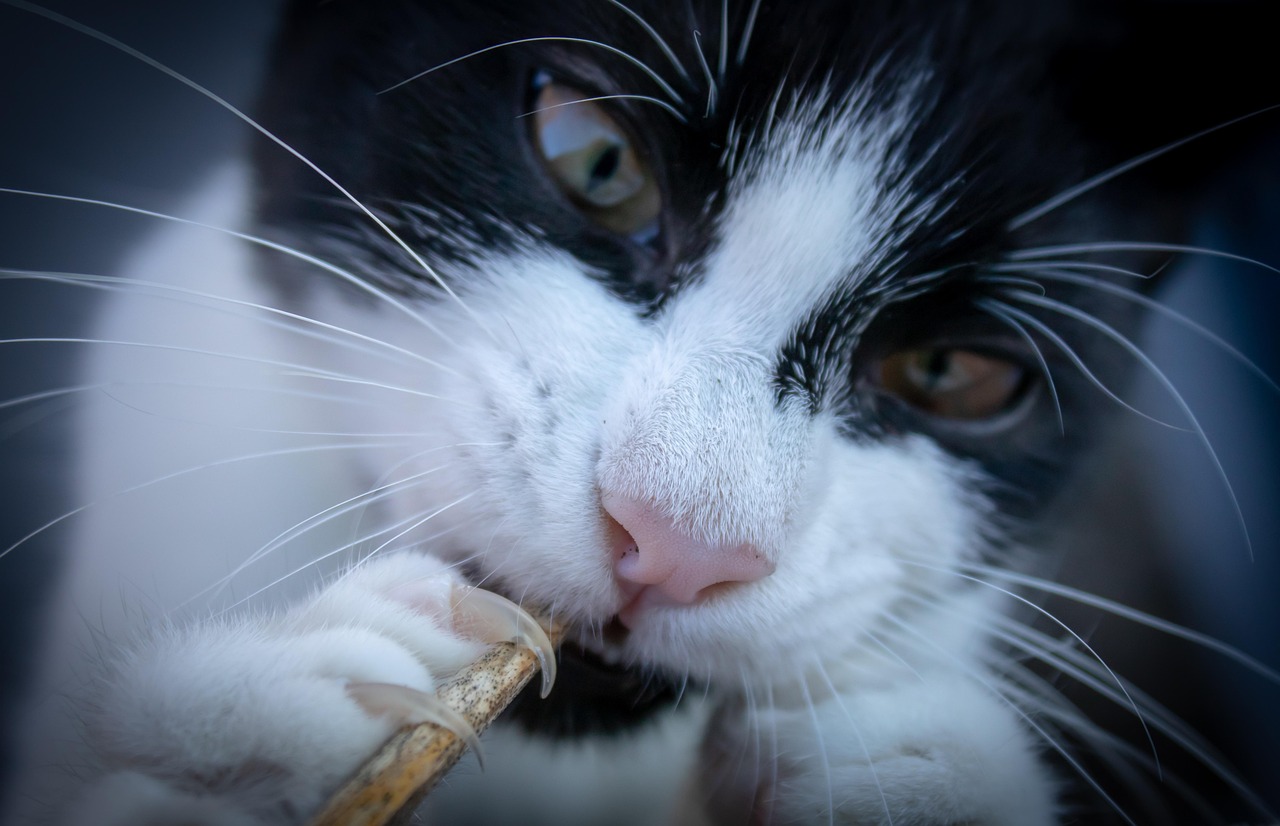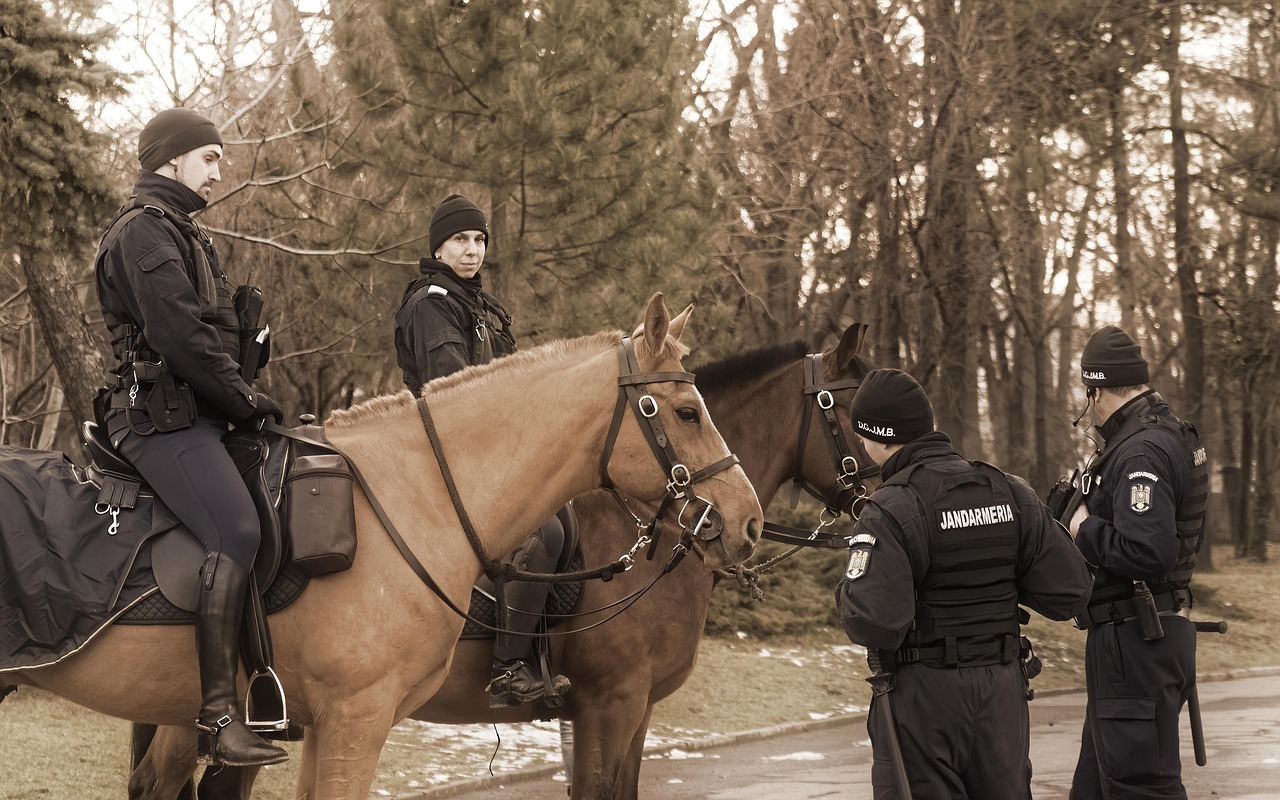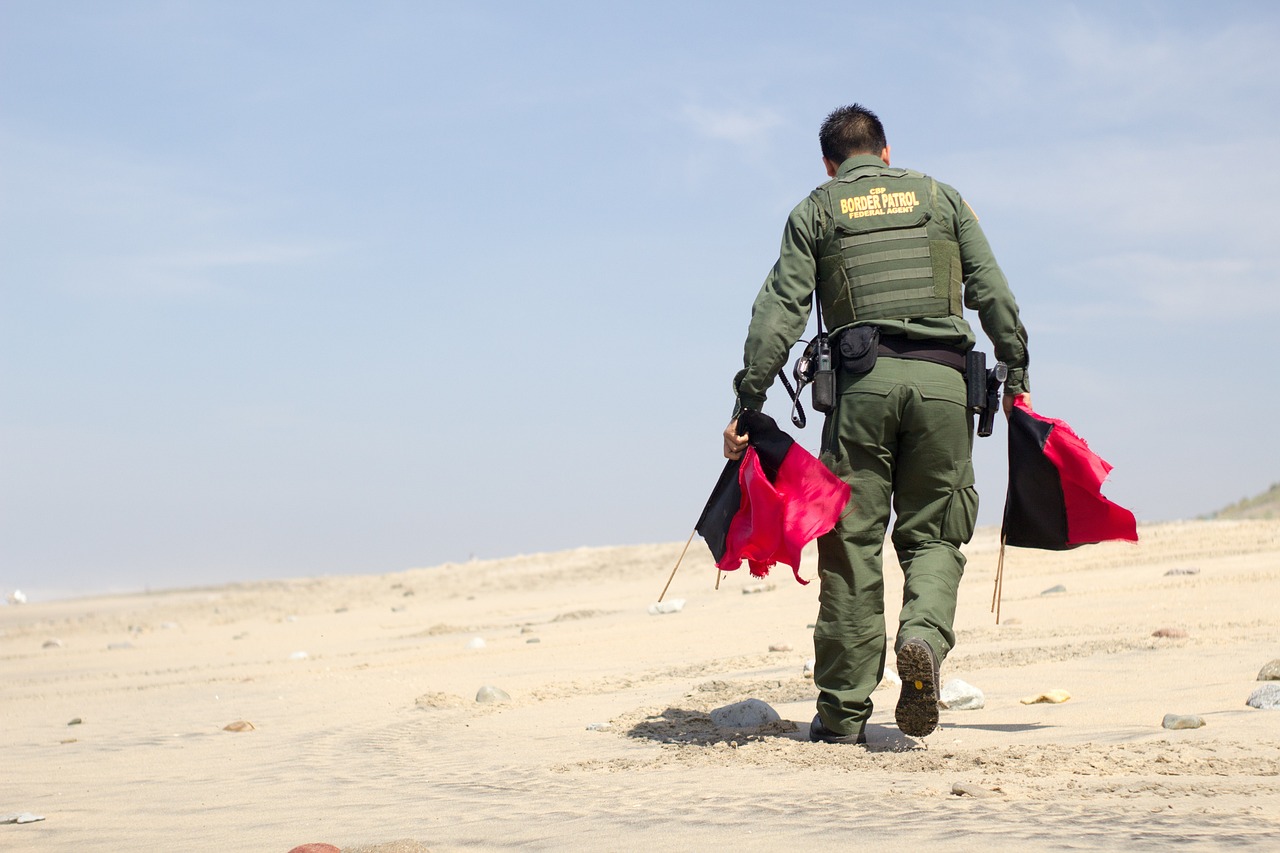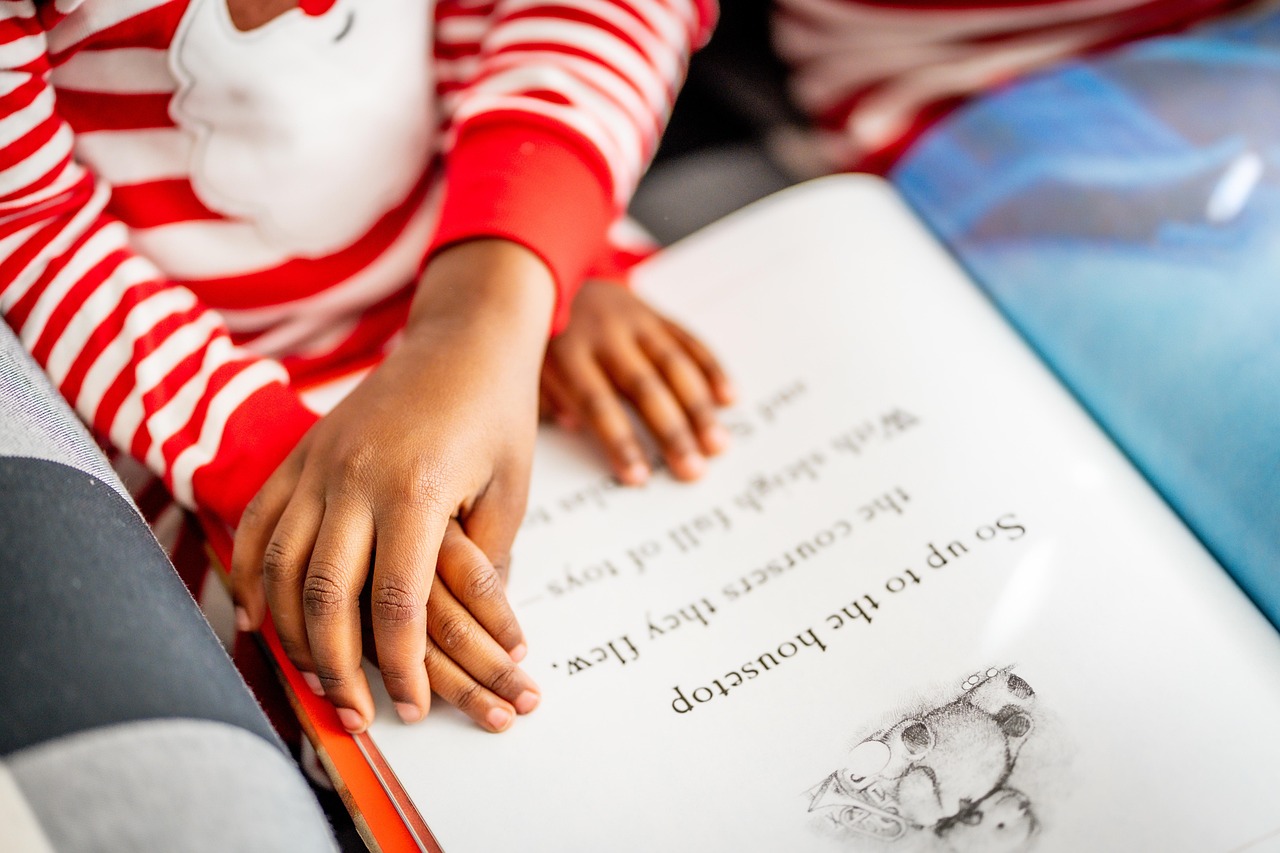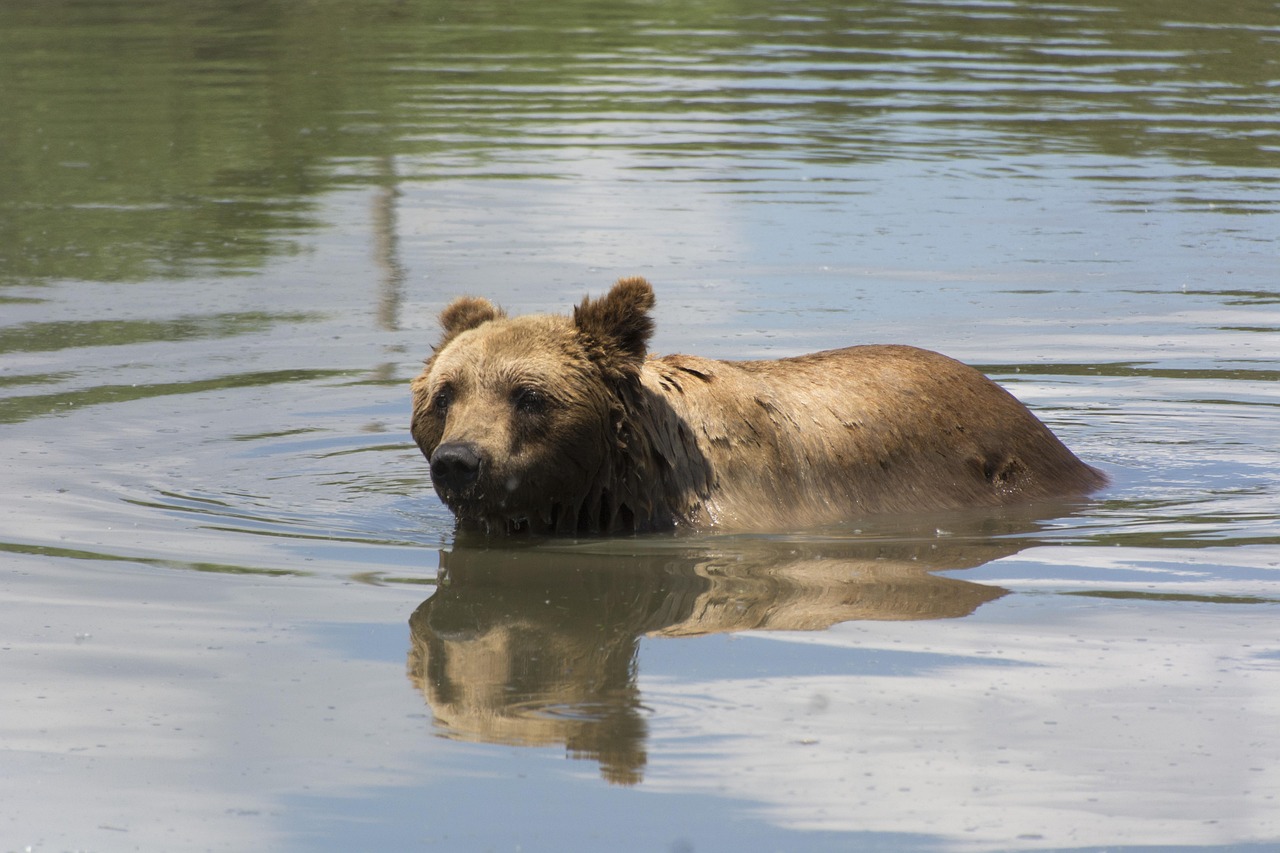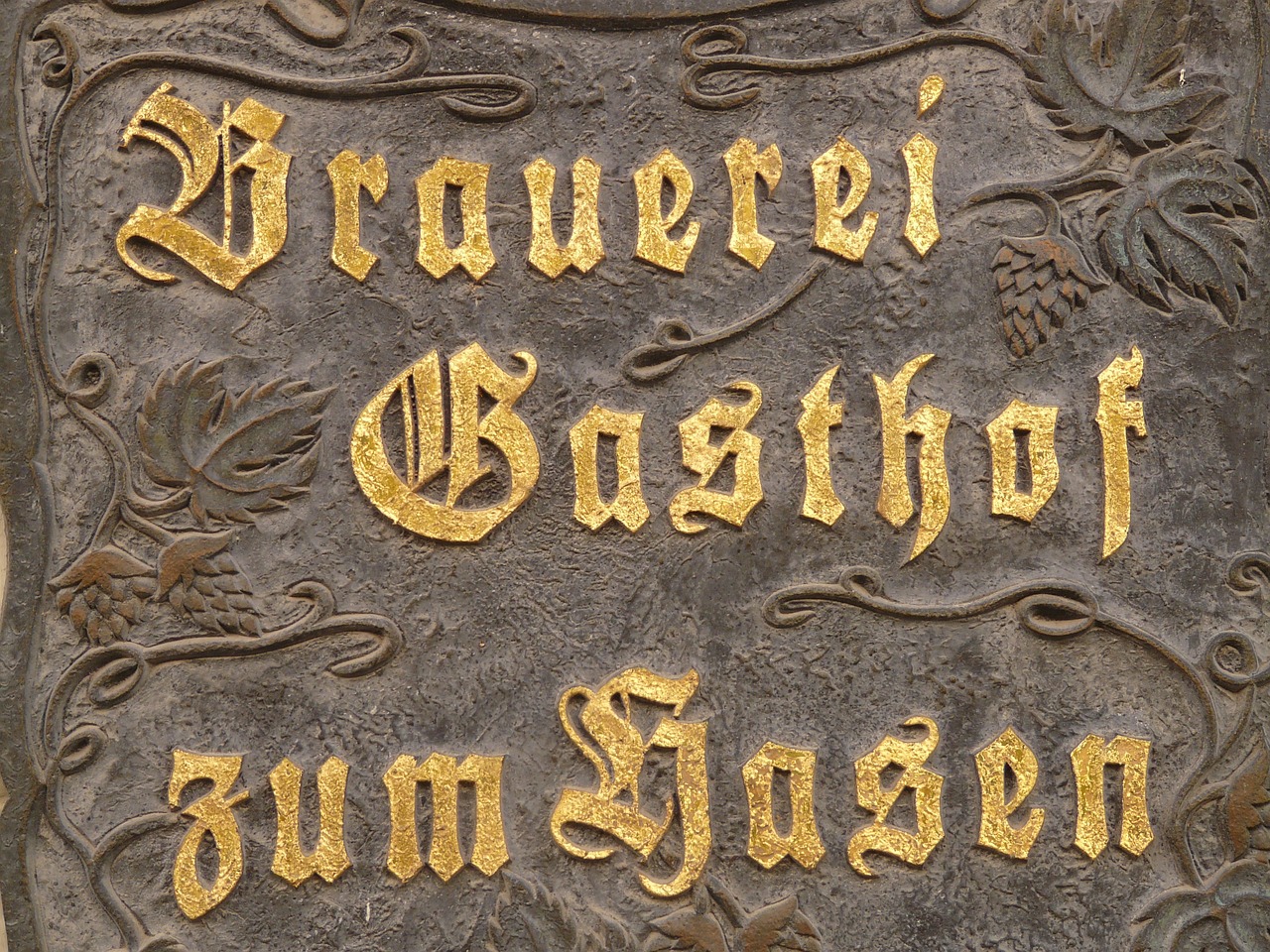This article delves into the fascinating creation of Paw Patrol, exploring its development, characters, and cultural impact while providing insights into the show’s production process and its creators’ vision.
Origins of Paw Patrol
The journey of Paw Patrol began with a simple yet captivating concept: a team of heroic puppies dedicated to helping their community. The show’s creator, Keith Chapman, envisioned a world where young viewers could learn about teamwork, problem-solving, and friendship through engaging stories. Initially, the idea was to create a series that would not only entertain but also impart valuable lessons to children. Over time, this concept evolved into a beloved franchise that resonates with families around the globe.
Creators and Production Team
At the heart of Paw Patrol is its creator, Keith Chapman, whose previous work on Bob the Builder laid the groundwork for his approach to this new series. Chapman assembled a talented team of animators, writers, and producers who shared his vision. Together, they crafted a show that emphasizes adventure and camaraderie, ensuring that each episode is both entertaining and educational.
The Vision of Keith Chapman
Chapman’s vision for Paw Patrol was clear: to create a series that combines excitement with moral lessons. He aimed to engage preschoolers while also appealing to their parents. The show’s format encourages children to think critically and work together, making it a valuable addition to children’s programming.
The Role of Spin Master
Spin Master, the toy and entertainment company, played a pivotal role in bringing Paw Patrol to life. From the initial concept to the extensive range of merchandise that followed, Spin Master’s involvement ensured that the franchise reached its full potential. The partnership allowed for a seamless transition from screen to toy aisle, captivating children and parents alike.
Character Development and Design
The character creation process was meticulous, with each pup designed to possess unique traits and skills. This thoughtful development contributes to the show’s educational messages about teamwork and responsibility. Characters like Chase, Marshall, and Skye are not just cute; they embody values that resonate with young audiences, teaching them the importance of helping others and working together.
Animation Style and Techniques
Paw Patrol employs cutting-edge CGI animation, which allows for vibrant visuals and dynamic action sequences. This choice enhances the storytelling, making it engaging for young viewers. The animation style is designed to capture the attention of preschoolers, ensuring that each episode is not only fun but also visually stimulating.
Influence of Color and Sound
Color theory plays a significant role in Paw Patrol, with bright, engaging colors used to attract young viewers. Additionally, the sound design enhances the storytelling experience, creating an immersive environment that captivates the audience. The combination of visual and auditory elements makes the show memorable and impactful.
Music and Theme Songs
The catchy theme song of Paw Patrol has become iconic, helping to establish the show’s identity. Music is a vital component, as it not only entertains but also reinforces the show’s themes of adventure and teamwork. The memorable tunes resonate with children, making it easy for them to sing along and connect with the characters.
Cultural Impact and Reception
Since its debut, Paw Patrol has made a significant cultural impact, receiving positive reception from both parents and children. Its emphasis on community values and problem-solving has influenced children’s programming, setting a standard for educational content in entertainment.
Merchandising Success
The extensive range of merchandise inspired by Paw Patrol has contributed to its popularity and financial success. From toys to clothing, the franchise has created a vast ecosystem that allows children to engage with their favorite characters beyond the screen.
Global Reach and Adaptations
Paw Patrol has successfully expanded its reach internationally, with adaptations in various languages and cultures. This global appeal has solidified its status as a staple in children’s entertainment, showcasing its ability to resonate with diverse audiences.
Paw Patrol,
Paw Patrol has become a hallmark of children’s entertainment since its debut, captivating young audiences with tales of adventure, teamwork, and community values. This article delves into the fascinating creation of Paw Patrol, exploring its development, characters, and cultural impact while providing insights into the show’s production process and its creators’ vision.
Origins of Paw Patrol
The initial concept of Paw Patrol stemmed from a simple premise: a group of animated pups working together to solve problems and help their community. The idea evolved significantly, influenced by the need for engaging content that promotes teamwork and responsibility among preschoolers. The show’s charm lies in its relatable scenarios that resonate with children and parents alike.
Creators and Production Team
At the helm of Paw Patrol is Keith Chapman, the show’s creator. Chapman, known for his previous work on Bob the Builder, brought a wealth of experience to the project. His vision was to create a series that combines adventure with valuable life lessons, making it appealing to both children and their guardians.
The Role of Spin Master
The toy and entertainment company Spin Master played a crucial role in the development of Paw Patrol. From its initial concept to the extensive merchandising that followed, Spin Master ensured that the show not only entertained but also provided a plethora of products for fans.
Character Development and Design
Each character in Paw Patrol was designed with unique traits and skills, contributing to the show’s educational messages. The pups, each representing different professions and values, teach children about teamwork, problem-solving, and responsibility. This thoughtful character development resonates with the show’s young audience.
Animation Style and Techniques
The use of CGI in Paw Patrol allows for vibrant visuals and dynamic action sequences. This animation style engages young viewers, making the adventures of the pups visually appealing. The bright colors and lively animation contribute to the show’s success, capturing the attention of children around the world.
Influence of Color and Sound
Color theory and sound design play significant roles in enhancing storytelling in Paw Patrol. The show’s creators use specific colors to evoke emotions and create an immersive experience. The sound design, including the iconic theme song, helps establish the show’s identity and connect with its audience.
Cultural Impact and Reception
Paw Patrol has made a significant cultural impact, receiving positive reception from parents and children. The show’s focus on community values and teamwork has influenced children’s programming, encouraging educational content that entertains. Its success is evident in the extensive range of merchandise available, from toys to clothing.
Merchandising Success
The extensive range of merchandise inspired by Paw Patrol has contributed to the show’s popularity and financial success. From action figures to clothing, the brand has become a household name, allowing children to engage with their favorite characters beyond the screen.
Global Reach and Adaptations
Paw Patrol has expanded its reach internationally, with adaptations in various languages and cultures. This global appeal has solidified its place in children’s entertainment, showcasing the universal themes of friendship and teamwork that resonate across borders.
exploring its development, characters, and cultural impact while providing insights into the show’s production process and its creators’ vision.
How Paw Patrol Was Created: Behind-the-Scenes Facts
This article delves into the fascinating creation of Paw Patrol, exploring its development, characters, and cultural impact while providing insights into the show’s production process and its creators’ vision.
Origins of Paw Patrol
Discover the initial concept and inspiration behind Paw Patrol, including how the idea evolved from a simple premise into a beloved children’s series that captures the hearts of young audiences worldwide. The show was created to instill values of teamwork and community service in children, making it both entertaining and educational.
Creators and Production Team
Learn about the key figures behind Paw Patrol, including its creator, Keith Chapman, and the talented team of animators, writers, and producers who brought the show to life. Keith’s vision was to create a series that not only entertained but also taught important life lessons.
- The Vision of Keith Chapman
Explore Keith Chapman’s background and his vision for Paw Patrol, which combines adventure, teamwork, and problem-solving in a format that appeals to preschoolers and their parents alike. This unique approach allows children to engage with the characters and learn valuable skills.
- Chapman’s Previous Work
Examine Keith Chapman’s previous successes, including Bob the Builder, and how they influenced his approach to creating a new franchise focusing on rescue missions and community values. His experience helped shape the narrative style and character development in Paw Patrol.
- The Role of Spin Master
Understand how Spin Master, the toy and entertainment company, played a crucial role in developing Paw Patrol, from its initial concept to the extensive merchandising that followed. This partnership allowed for a seamless transition from screen to toy shelves, enhancing the show’s visibility.
Character Development and Design
Delve into the character creation process, including how each pup was designed with unique traits and skills, contributing to the show’s educational messages about teamwork and responsibility. Each character represents different professions, allowing children to learn about various community roles.
Animation Style and Techniques
Uncover the animation techniques used in Paw Patrol, including the decision to employ CGI, which allows for vibrant visuals and dynamic action sequences that engage young viewers. The animation style is specifically tailored to capture the attention of preschoolers, making learning fun.
- Influence of Color and Sound
Explore how color theory and sound design are utilized in Paw Patrol to enhance storytelling and create an immersive experience for its audience, making it appealing and memorable. Bright colors and catchy sounds play a significant role in keeping children engaged.
- Music and Theme Songs
Investigate the role of music in Paw Patrol, including the catchy theme song that has become iconic, helping to establish the show’s identity and connect with its young audience. The music reinforces the show’s themes of friendship and teamwork.
Cultural Impact and Reception
Analyze the cultural significance of Paw Patrol, examining its reception among parents and children, as well as its influence on children’s programming and educational content. The show has sparked discussions about community service and responsibility.
- Merchandising Success
Learn about the extensive range of merchandise inspired by Paw Patrol, from toys to clothing, and how this has contributed to the show’s popularity and financial success. The availability of merchandise has kept the show in the public eye, reinforcing its messages.
- Global Reach and Adaptations
Explore how Paw Patrol has expanded its reach internationally, including adaptations in various languages and cultures, and its impact on children’s entertainment across the globe. The show’s universal themes of friendship and teamwork resonate with audiences worldwide.
Origins of Paw Patrol
Paw Patrol has become a household name, captivating the hearts of children and parents alike. But have you ever wondered about the origins of this beloved series? The journey of Paw Patrol began with a simple yet powerful concept that aimed to entertain while imparting valuable lessons about teamwork, responsibility, and community service.
The initial idea for Paw Patrol was conceived by Keith Chapman, a seasoned creator known for his work on children’s programming. Drawing inspiration from the heroic nature of rescue dogs, Chapman envisioned a group of animated pups, each with unique skills and personalities, dedicated to helping their community. This concept was not merely about entertainment; it was about instilling a sense of civic duty in young viewers.
As the idea evolved, the production team at Spin Master worked closely with Chapman to flesh out the characters and storyline. The team recognized the importance of creating relatable characters that children could look up to. Each pup was designed with distinct traits, ensuring that every child could find a favorite character who resonated with them. For instance, Chase the police pup embodies leadership and bravery, while Skye the aviator pup showcases adventure and creativity.
Moreover, the show’s setting, the vibrant Adventure Bay, was crafted to reflect a community where teamwork and problem-solving are essential. This backdrop not only serves as a playground for the pups’ adventures but also reinforces the idea that working together can overcome challenges.
The production team also paid special attention to the educational aspects of the show. Each episode is designed to present a problem that the pups must solve, encouraging young viewers to think critically and collaboratively. This approach aligns with modern educational philosophies that emphasize the importance of social skills and emotional intelligence in early childhood development.
In addition to its educational value, Paw Patrol’s production quality set a new standard for children’s animation. The decision to use CGI animation allowed for vibrant visuals and dynamic action sequences, engaging young audiences and enhancing their viewing experience. This innovative approach not only made the show visually appealing but also brought the characters to life in a way that traditional animation could not.
The show’s catchy theme song, which introduces the characters and their mission, further solidifies its identity. The music is designed to be memorable and singable, ensuring that children can easily connect with the show. This connection is crucial for building a loyal fan base, as children often gravitate towards content that resonates with them emotionally.
In conclusion, the origins of Paw Patrol are rooted in a vision that transcends mere entertainment. By combining engaging storytelling with educational themes, Keith Chapman and the production team have created a series that not only entertains but also teaches valuable life lessons. The show’s success is a testament to the power of creativity and the importance of fostering community values in young children.
Paw Patrol,
Paw Patrol is a beloved children’s television series that has captured the hearts of young audiences worldwide. This article delves into the fascinating creation of Paw Patrol, exploring its development, characters, and cultural impact while providing insights into the show’s production process and its creators’ vision.
Origins of Paw Patrol
The initial concept of Paw Patrol was inspired by the idea of using adorable puppies to teach children about teamwork and problem-solving. The show evolved from a simple premise into a vibrant series that combines adventure with educational themes, making it a favorite among preschoolers.
Creators and Production Team
At the helm of Paw Patrol is its creator, Keith Chapman, who has a rich background in children’s entertainment. He envisioned a show that not only entertains but also imparts essential values to its young viewers.
- The Vision of Keith Chapman: Keith’s vision for Paw Patrol was to create a series that emphasizes adventure, teamwork, and community service, appealing to both children and parents alike.
- Chapman’s Previous Work: Before Paw Patrol, Keith was known for Bob the Builder, which influenced his approach to creating characters that embody resilience and cooperation.
- The Role of Spin Master: Spin Master, the toy and entertainment company, played a crucial role in developing Paw Patrol, from its initial concept to the extensive merchandising that followed.
Character Development and Design
Each pup in Paw Patrol was designed with unique traits and skills, contributing to the show’s educational messages about teamwork and responsibility. The diversity in characters allows children to relate to different personalities and learn valuable lessons.
Animation Style and Techniques
The animation style of Paw Patrol employs CGI, which allows for vibrant visuals and dynamic action sequences that engage young viewers. The use of color theory and sound design enhances storytelling, creating an immersive experience for its audience.
- Influence of Color and Sound: The show’s creators utilize color theory and sound design to enhance storytelling, making it both appealing and memorable.
- Music and Theme Songs: The catchy theme song of Paw Patrol has become iconic, helping to establish the show’s identity and connect with its young audience.
Cultural Impact and Reception
The cultural significance of Paw Patrol is evident in its reception among parents and children alike. The show has influenced children’s programming and educational content, encouraging positive behaviors and social skills.
- Merchandising Success: The extensive range of merchandise inspired by Paw Patrol, from toys to clothing, has contributed to the show’s popularity and financial success.
- Global Reach and Adaptations: Paw Patrol has expanded its reach internationally with adaptations in various languages and cultures, impacting children’s entertainment across the globe.
In summary, Paw Patrol stands as a testament to the power of creativity in children’s programming. Its blend of adventure, education, and relatable characters has made it a staple in households around the world.
including how the idea evolved from a simple premise into a beloved children’s series that captures the hearts of young audiences worldwide.
Paw Patrol has become a household name in children’s entertainment, captivating young audiences around the globe. This article takes an in-depth look at how this beloved series was created, from its initial concept to its cultural impact, providing insights into the minds behind the show and the techniques used in its production.
Origins of Paw Patrol
The idea for Paw Patrol originated from a simple premise: a group of animated puppies working together to solve problems and help their community. The show’s creator, Keith Chapman, envisioned a series that would not only entertain but also impart valuable lessons about teamwork and responsibility. Initially inspired by classic rescue stories and the idea of community service, the concept quickly evolved into a vibrant series that resonates with preschoolers.
Creators and Production Team
At the heart of Paw Patrol is its creator, Keith Chapman, who previously gained fame with Bob the Builder. His experience in children’s programming laid the groundwork for Paw Patrol‘s success. The production team at Spin Master, a toy and entertainment company, played a crucial role in developing the show’s concept and its extensive merchandising strategy.
Character Development and Design
The character design process for Paw Patrol involved creating unique traits and skills for each pup, ensuring they each had distinct personalities. This diversity not only makes the characters relatable but also reinforces the show’s educational messages about teamwork and problem-solving. The characters include Chase, the police pup; Marshall, the fire pup; and Skye, the aviator pup, each contributing to the narrative in their own special way.
Animation Style and Techniques
Utilizing advanced CGI animation techniques, Paw Patrol brings vibrant visuals and dynamic action sequences to life. This animation style enhances the storytelling, engaging young viewers and maintaining their attention throughout each episode. The use of bright colors and engaging sound design further enriches the viewing experience, making it immersive and memorable.
Music and Theme Songs
The catchy theme song of Paw Patrol has become iconic, playing a significant role in establishing the show’s identity. Music not only entertains but also helps reinforce the show’s core messages, making it easier for children to remember the lessons being taught.
Cultural Impact and Reception
Paw Patrol has made a significant cultural impact, becoming a staple in children’s programming. Its reception among parents and children has been overwhelmingly positive, with many praising its focus on teamwork and community values. The show has influenced educational content in children’s television, setting a standard for future programming.
Merchandising Success
The extensive range of merchandise inspired by Paw Patrol, from toys to clothing, has contributed to its popularity and financial success. The ability to connect with young audiences through tangible products has allowed the franchise to thrive beyond television.
Global Reach and Adaptations
Paw Patrol has expanded its reach internationally, with adaptations in various languages and cultures. This global appeal highlights the show’s universal themes of friendship, teamwork, and community service, making it a beloved series across different regions.
In summary, Paw Patrol has evolved from a simple idea into a cultural phenomenon. Its creators’ vision, combined with innovative animation techniques and engaging storytelling, has ensured its place in the hearts of children and parents alike.
Creators and Production Team
Paw Patrol has become a phenomenon in children’s entertainment, captivating audiences with its engaging stories and lovable characters. At the heart of this success lies a dedicated team of creators and production staff who worked tirelessly to bring the show to life. Understanding the key figures behind Paw Patrol provides insight into the vision and creativity that shaped this beloved series.
Keith Chapman, the creator of Paw Patrol, is a pivotal figure in the show’s development. With a background in children’s television, Chapman previously gained acclaim for his work on Bob the Builder. His experience in crafting engaging narratives for young audiences laid the groundwork for the creation of Paw Patrol. Chapman’s vision was clear: he wanted to create a show that not only entertained but also imparted valuable lessons about teamwork, problem-solving, and community service.
The production team behind Paw Patrol is equally impressive. Comprising talented animators, writers, and producers, this diverse group collaborated to ensure that each episode resonated with its target audience. The writers crafted relatable stories that feature the heroic pups tackling various challenges, while the animators brought these characters to life through vibrant CGI animation. This combination of storytelling and visual artistry has been crucial in making Paw Patrol a staple in children’s programming.
- Animation Team: The animation team utilized cutting-edge technology to create engaging visuals that captivate young viewers. Their work not only enhances the storytelling but also helps convey important messages about friendship and cooperation.
- Writers and Story Developers: The writers are responsible for crafting the narrative arcs that guide each episode. Their ability to weave educational themes into entertaining plots has been essential in maintaining the show’s appeal.
- Producers: The producers oversee the entire production process, ensuring that each episode meets high standards of quality and aligns with the show’s educational goals.
In addition to Keith Chapman, other notable figures have played significant roles in shaping the series. Spin Master, the toy and entertainment company, has been instrumental in the show’s success. Their partnership with Chapman and the production team allowed for a seamless transition from screen to toy aisle, creating a vast array of merchandise that has further solidified the show’s popularity.
The collaborative effort of the creators and production team has resulted in a series that not only entertains but also educates. Each character in Paw Patrol is designed with unique traits and skills, promoting messages of teamwork and responsibility. This thoughtful character development is a testament to the dedication of the team behind the scenes.
As Paw Patrol continues to grow in popularity, it is clear that the vision of its creators and the hard work of the production team have laid a strong foundation for its success. Their commitment to creating quality content for children has not only entertained millions but has also left a lasting impact on children’s television.
Paw Patrol,
Paw Patrol is a beloved children’s animated series that has captured the hearts of young audiences worldwide. Created by Keith Chapman, the show debuted in 2013 and has since become a cultural phenomenon. This article delves into the fascinating creation of Paw Patrol, exploring its development, characters, and cultural impact while providing insights into the show’s production process and its creators’ vision.
Origins of Paw Patrol
The initial concept of Paw Patrol stemmed from a simple premise: a group of rescue dogs led by a boy named Ryder who work together to protect their community. Inspired by the idea of teamwork and problem-solving, Chapman envisioned a series that would not only entertain but also educate preschoolers about the importance of helping others.
Creators and Production Team
The team behind Paw Patrol includes animators, writers, and producers who collaborated to bring this vibrant world to life. Keith Chapman, the creator, drew on his extensive experience in children’s television to craft engaging narratives that appeal to both children and their parents.
- The Vision of Keith Chapman: Keith’s background in children’s programming, including his work on Bob the Builder, shaped his vision for Paw Patrol. He aimed to create a show that combines adventure, teamwork, and educational values.
- Chapman’s Previous Work: His previous successes laid the groundwork for a franchise focused on rescue missions and community values, ensuring that each episode of Paw Patrol carries a meaningful message.
- The Role of Spin Master: Spin Master, the toy and entertainment company, played a crucial role in developing Paw Patrol, from its initial concept to the extensive merchandising that followed.
Character Development and Design
Each character in Paw Patrol was designed with unique traits and skills, contributing to the show’s educational messages about teamwork and responsibility. The main characters include:
| Character | Skill |
|---|---|
| Chase | Police Dog |
| Marshall | Firefighter Dog |
| Skye | Aviation Expert |
| Rubble | Construction Dog |
Animation Style and Techniques
Paw Patrol employs CGI animation, which allows for vibrant visuals and dynamic action sequences that engage young viewers. The animation style is designed to be both appealing and educational, fostering creativity and imagination.
- Influence of Color and Sound: Color theory and sound design are utilized to enhance storytelling, creating an immersive experience for its audience.
- Music and Theme Songs: The catchy theme song has become iconic, helping to establish the show’s identity and connect with its young audience.
Cultural Impact and Reception
The cultural significance of Paw Patrol is evident in its reception among parents and children. The show has influenced children’s programming and educational content, making it a staple in many households.
- Merchandising Success: The extensive range of merchandise, from toys to clothing, has contributed to the show’s popularity and financial success.
- Global Reach and Adaptations: Paw Patrol has expanded its reach internationally, with adaptations in various languages and cultures, impacting children’s entertainment across the globe.
In conclusion, Paw Patrol stands as a testament to effective storytelling and character development, making it a cherished series in children’s television. Its impact continues to resonate with audiences, ensuring its place in the hearts of many.
including its creator, Keith Chapman, and the talented team of animators, writers, and producers who brought the show to life.
Paw Patrol is a beloved children’s television series that has captivated audiences around the globe. Created by Keith Chapman, this show combines engaging storytelling with valuable life lessons, making it a staple in preschool programming. This article explores the behind-the-scenes facts about the show’s creation, its characters, and the cultural impact it has had since its debut.
Origins of Paw Patrol
The concept of Paw Patrol originated from a simple idea of combining adventure with teamwork. Initially, Keith Chapman envisioned a group of rescue dogs working together to solve problems and assist their community. This idea evolved into a series that not only entertains but also teaches essential values such as cooperation, responsibility, and friendship.
Creators and Production Team
At the heart of Paw Patrol is its creator, Keith Chapman. His background in children’s entertainment, including the success of Bob the Builder, paved the way for the development of this new franchise. The production team, comprising talented animators, writers, and producers, collaborated closely to bring Keith’s vision to life. Their combined efforts resulted in a show that resonates with both children and their parents.
The Vision of Keith Chapman
Keith Chapman’s vision for Paw Patrol was to create a series that emphasizes adventure and teamwork. His passion for storytelling is evident in the way each episode unfolds, combining humor with educational messages. The characters are designed to be relatable and inspiring, encouraging young viewers to engage in problem-solving and community service.
Character Development and Design
Each character in Paw Patrol was carefully crafted with unique traits and skills that contribute to the show’s educational themes. The main pups, including Chase, Marshall, and Skye, represent various professions and skills, illustrating the importance of diversity and collaboration. This thoughtful character development helps children understand different roles within a community.
Animation Style and Techniques
The animation style of Paw Patrol employs cutting-edge CGI technology, resulting in vibrant visuals and dynamic action sequences. This choice not only captivates young viewers but also enhances the storytelling experience. The use of bright colors and engaging character designs keeps children entertained while delivering important messages.
Influence of Color and Sound
Color theory plays a significant role in Paw Patrol, as various colors are used to evoke specific emotions and reactions. Additionally, sound design, including the show’s catchy theme song, enhances the overall experience, making it memorable for its audience. The combination of visual and auditory elements creates an immersive environment that keeps children engaged.
Cultural Impact and Reception
Paw Patrol has made a significant cultural impact since its launch. It has been embraced by parents and children alike, becoming a staple in children’s programming. The show’s ability to address real-life situations and promote positive values has led to its widespread acceptance and popularity.
Merchandising Success
The success of Paw Patrol extends beyond the screen, with an extensive range of merchandise available, from toys to clothing. This merchandising success has contributed to the show’s financial achievements and has solidified its place in popular culture.
Global Reach and Adaptations
As Paw Patrol continues to expand its reach, it has been adapted into various languages and cultures, allowing it to connect with children worldwide. Its influence on children’s entertainment is undeniable, as it sets a standard for educational content that is both fun and engaging.

The Vision of Keith Chapman
has played a pivotal role in shaping the beloved children’s series, Paw Patrol. With a rich background in animation and storytelling, Keith Chapman has successfully crafted a show that resonates with both children and parents alike. His vision is rooted in the principles of teamwork, adventure, and problem-solving, elements that not only entertain but also educate young viewers.
Chapman’s journey began with his earlier success in creating Bob the Builder, which laid the foundation for his understanding of children’s programming. This experience taught him the importance of relatable characters and engaging narratives, which he adeptly applied to Paw Patrol. The show’s premise revolves around a group of animated pups who embark on various rescue missions, showcasing the significance of community and collaboration.
One of the key aspects of Chapman’s vision is to create a show that empowers children. By featuring characters who work together to solve problems, he instills values of cooperation and responsibility. Each character in Paw Patrol is designed with unique skills and traits, allowing young viewers to see the importance of diversity and teamwork in achieving common goals.
Moreover, Keith Chapman emphasizes the need for positive role models in children’s media. The characters in Paw Patrol are not just cute and entertaining; they embody qualities such as bravery, kindness, and ingenuity. This thoughtful character development is crucial in helping children navigate real-world challenges and understand the impact of their actions.
In addition to character development, Chapman’s vision extends to the show’s overall aesthetic and educational content. The vibrant animation style, coupled with engaging storylines, captures the attention of preschoolers, making learning enjoyable. The incorporation of educational themes, such as basic problem-solving and community service, is seamlessly woven into the fabric of each episode, ensuring that children are not only entertained but also enriched.
Chapman’s partnership with Spin Master has further enhanced his vision for Paw Patrol. Together, they have transformed the show into a global phenomenon, with extensive merchandising that includes toys, clothing, and more. This collaboration has allowed the series to maintain its quality while expanding its reach, making it accessible to children around the world.
Ultimately, Keith Chapman’s vision for Paw Patrol is a testament to his dedication to creating meaningful children’s entertainment. By focusing on adventure, teamwork, and positive values, he has crafted a show that not only entertains but also educates and inspires. As Paw Patrol continues to grow, Chapman’s influence remains evident in every episode, ensuring that the series will remain a treasured part of childhood for generations to come.
Paw Patrol,
Paw Patrol is a beloved children’s television series that has captured the hearts of young audiences around the globe. Created by Keith Chapman, this show combines thrilling adventures with valuable lessons about teamwork and community service. In this article, we will explore the fascinating behind-the-scenes journey of Paw Patrol, from its origins to its cultural impact.
- Origins of Paw Patrol
The initial concept of Paw Patrol was inspired by the idea of community heroes. Keith Chapman envisioned a group of pups, each with unique skills, working together to solve problems. This simple premise evolved into a series that emphasizes the importance of teamwork and problem-solving. The show debuted in 2013 and quickly became a favorite among preschoolers.
- Creators and Production Team
At the heart of Paw Patrol is its creator, Keith Chapman. His previous work on Bob the Builder laid the foundation for his approach to creating engaging children’s content. The production team, including talented animators and writers, collaborated to bring Chapman’s vision to life, ensuring that each episode is both entertaining and educational.
- Character Development and Design
The character design process for Paw Patrol involved creating distinctive pups, each representing different skills and traits. Characters like Chase, Marshall, and Skye not only engage children but also teach important lessons about responsibility and teamwork. The show’s educational messages are woven seamlessly into the narrative, making learning enjoyable.
- Animation Style and Techniques
Paw Patrol employs cutting-edge CGI animation, allowing for vibrant visuals and dynamic action sequences. This animation style captivates young viewers, keeping them engaged throughout each episode. The use of color theory enhances the storytelling, creating an immersive experience that resonates with children.
- Music and Theme Songs
The show’s catchy theme song has become iconic, helping to establish Paw Patrol‘s identity. Music plays a crucial role in enhancing the storytelling, making the show memorable and enjoyable for its audience. The upbeat tunes encourage children to sing along, further deepening their connection to the characters.
- Cultural Impact and Reception
Paw Patrol has had a significant cultural impact, influencing children’s programming and educational content. The show’s reception among parents and children has been overwhelmingly positive, with many praising its focus on community values and teamwork.
- Merchandising Success
The extensive range of Paw Patrol merchandise, from toys to clothing, has contributed to the show’s popularity and financial success. This merchandising success highlights the show’s strong connection with its audience, as children are eager to engage with their favorite characters beyond the screen.
- Global Reach and Adaptations
Finally, Paw Patrol has expanded its reach internationally, with adaptations in various languages and cultures. This global appeal showcases the show’s ability to resonate with children from different backgrounds, making it a significant player in children’s entertainment worldwide.
which combines adventure, teamwork, and problem-solving in a format that appeals to preschoolers and their parents alike.
Paw Patrol has become a household name, captivating the hearts of children and parents alike with its engaging stories and vibrant characters. This article delves into the fascinating creation of Paw Patrol, exploring its development, characters, and cultural impact while providing insights into the show’s production process and its creators’ vision.
Origins of Paw Patrol
The journey of Paw Patrol began with a simple concept that aimed to teach children about teamwork, friendship, and problem-solving. The initial idea was to create a group of rescue dogs, each with unique skills, to tackle various challenges in their community. This premise quickly evolved into a beloved children’s series that captures the hearts of young audiences worldwide.
Creators and Production Team
At the helm of Paw Patrol is its creator, Keith Chapman, a visionary whose background in children’s entertainment laid the foundation for the show’s success. Chapman assembled a talented team of animators, writers, and producers who worked tirelessly to bring the show to life, ensuring it resonated with preschoolers and their parents alike.
The Vision of Keith Chapman
Keith Chapman’s vision for Paw Patrol was to combine adventure and education in a format that appeals to young viewers. His previous work on Bob the Builder influenced his approach, focusing on rescue missions that teach valuable lessons about community values.
The Role of Spin Master
Spin Master, the toy and entertainment company, played a crucial role in developing Paw Patrol. From the initial concept to the extensive merchandising that followed, Spin Master helped ensure the show’s success both on screen and in stores.
Character Development and Design
The character creation process in Paw Patrol involved designing each pup with unique traits and skills. This thoughtful approach contributes to the show’s educational messages about teamwork and responsibility, making learning fun and engaging.
Animation Style and Techniques
Paw Patrol employs CGI animation techniques, allowing for vibrant visuals and dynamic action sequences that engage young viewers. The animation style is designed to captivate children’s attention while delivering important life lessons.
Influence of Color and Sound
The use of color theory and sound design in Paw Patrol enhances storytelling, creating an immersive experience for its audience. Bright colors and catchy sound effects contribute to the show’s appeal and memorability.
Music and Theme Songs
The role of music in Paw Patrol cannot be overstated. The show’s catchy theme song has become iconic, helping to establish its identity and connect with its young audience. Music plays a vital part in reinforcing the show’s themes of adventure and teamwork.
Cultural Impact and Reception
Paw Patrol has made a significant cultural impact, receiving positive reception from parents and children alike. It has influenced children’s programming and educational content, setting a standard for future shows in the genre.
Merchandising Success
The extensive range of merchandise inspired by Paw Patrol includes toys, clothing, and accessories. This merchandising success has contributed to the show’s popularity and financial success, making it a staple in children’s entertainment.
Global Reach and Adaptations
Lastly, Paw Patrol has expanded its reach internationally, with adaptations in various languages and cultures. Its positive messages and engaging content have made it a beloved franchise across the globe, impacting children’s entertainment worldwide.
Chapman’s Previous Work
Keith Chapman, a notable figure in children’s entertainment, has an impressive track record that paved the way for the creation of Paw Patrol. Before venturing into the world of animated pups, Chapman was best known for his creation of Bob the Builder, a series that not only entertained children but also imparted essential lessons about teamwork, problem-solving, and the importance of community.
Bob the Builder, which debuted in 1998, quickly became a household name. The show featured Bob and his team of construction vehicles as they tackled various building projects and challenges. The catchy phrase, “Can we fix it? Yes, we can!” resonated with young viewers, instilling a sense of optimism and can-do spirit. This series was instrumental in shaping Chapman’s understanding of what captivates children’s attention and how to convey educational messages through engaging narratives.
Chapman’s approach to storytelling is deeply rooted in his belief that children learn best through play and adventure. This philosophy is evident in both Bob the Builder and Paw Patrol. In the latter, the focus shifted from construction to rescue missions, but the core values remained intact. Both shows emphasize the significance of collaboration and community support, which are vital lessons for preschoolers.
Moreover, the success of Bob the Builder provided Chapman with valuable insights into the importance of character design and relatability. Each character in Paw Patrol is crafted with distinct traits and skills, much like Bob’s crew, ensuring that children can identify with them and learn from their adventures. For instance, characters like Chase and Marshall not only embody bravery and determination but also showcase the importance of friendship and helping others.
Chapman’s previous work also highlighted the potential for merchandise and brand expansion. The popularity of Bob the Builder led to a wide range of toys, books, and apparel, setting a precedent for Paw Patrol. Spin Master, the company behind Paw Patrol, capitalized on this success by creating an extensive line of merchandise that includes action figures, playsets, and clothing, further embedding the show into the lives of young fans.
In addition to his successful franchises, Chapman’s experience in television production has allowed him to navigate the complexities of the industry effectively. His ability to collaborate with talented animators, writers, and producers has been crucial in bringing his visions to life. The seamless integration of storytelling, animation, and character development in Paw Patrol reflects the lessons learned from his earlier projects.
As a result, Keith Chapman’s previous successes have not only influenced his approach to creating Paw Patrol but have also set a high standard in children’s programming. His unique blend of adventure, education, and heartwarming stories continues to resonate with audiences globally, ensuring that both Bob the Builder and Paw Patrol remain cherished parts of childhood for many.
In summary, Keith Chapman’s journey from Bob the Builder to Paw Patrol exemplifies the evolution of children’s entertainment. His ability to adapt and innovate while maintaining core educational values has solidified his reputation as a leading creator in the industry.
Bob the Builder,
Bob the Builder is a beloved children’s television series that has captured the hearts of young audiences since its debut in 1998. This article explores the creation, characters, and cultural impact of Bob the Builder, providing insights into the show’s production process and the vision of its creators.
Origins of Bob the Builder
The initial concept of Bob the Builder originated from the creative mind of Keith Chapman, who wanted to create a show that combined construction themes with problem-solving. The idea evolved from a simple premise into a series that teaches children the value of teamwork and perseverance. Bob and his team of anthropomorphic machines work together to complete various construction projects, illustrating the importance of collaboration and community.
Creators and Production Team
The show was brought to life by a talented team of animators, writers, and producers. Keith Chapman, the creator, collaborated with Hit Entertainment and BBC to develop the series. The production team focused on creating engaging storylines that resonate with preschoolers while embedding educational messages about responsibility and friendship.
The Vision of Keith Chapman
Keith Chapman envisioned a character who embodies positivity and can-do spirit. Bob, with his signature yellow hard hat and tool belt, became a role model for children, showing them that with teamwork, anything is possible. This vision was influenced by Chapman’s previous work in children’s television, where he learned the importance of creating relatable characters.
Character Development and Design
The character design process was meticulous, with each character given unique traits and personalities. Bob is joined by his trusty team, including Wendy, Lofty, and Spud, each contributing to the show’s educational messages. The characters are designed to be colorful and engaging, appealing to young viewers while teaching them valuable life skills.
Animation Style and Techniques
Bob the Builder initially used stop-motion animation, which gave the show a unique charm. However, as technology advanced, the series transitioned to CGI animation, enhancing the visual appeal and allowing for dynamic action sequences. This shift helped maintain the show’s relevance in an ever-evolving media landscape.
Influence of Color and Sound
Color theory plays a significant role in Bob the Builder, with bright, vibrant colors used to attract young viewers’ attention. The sound design, including the iconic theme song, enhances storytelling and creates an immersive experience. The catchy tune has become synonymous with the show, helping to establish its identity.
Cultural Impact and Reception
Bob the Builder has had a profound cultural impact, becoming a staple in children’s programming. The show has received critical acclaim for its educational content and positive messages. Parents appreciate the emphasis on teamwork and problem-solving, while children are entertained by the engaging stories and characters.
Merchandising Success
The show’s popularity has led to a vast range of merchandise, including toys, clothing, and books. This extensive merchandising has contributed significantly to the financial success of Bob the Builder, solidifying its place in children’s entertainment. The character’s likeness can be found on various products, making Bob a household name.
Global Reach and Adaptations
Bob the Builder has expanded its reach internationally, with adaptations in multiple languages and cultures. The show’s universal themes of cooperation and problem-solving resonate with children worldwide. This global appeal has allowed Bob to become a beloved character in many households, influencing children’s entertainment across the globe.
and how they influenced his approach to creating a new franchise focusing on rescue missions and community values.
Paw Patrol has captured the hearts of children around the world with its engaging stories and vibrant characters. This beloved series, created by Keith Chapman, focuses on a group of rescue dogs led by a boy named Ryder. The show emphasizes themes of teamwork, problem-solving, and community values. In this article, we will explore the fascinating journey of how Paw Patrol was created, the characters that make it special, and its cultural impact.
Origins of Paw Patrol
The initial concept of Paw Patrol emerged from Keith Chapman’s desire to create a show that would resonate with preschoolers. Drawing inspiration from his previous work, Bob the Builder, Chapman envisioned a series that would not only entertain but also educate young viewers about the importance of helping others. The idea evolved from a simple premise of rescue missions into a multi-faceted franchise that promotes positive values.
Creators and Production Team
At the helm of Paw Patrol is Keith Chapman, whose background in children’s television has been instrumental in shaping the show’s vision. Alongside Chapman is a talented team of animators, writers, and producers who collaborate to bring the vibrant world of Adventure Bay to life. Their collective efforts ensure that each episode is not only entertaining but also rich in educational content.
The Vision of Keith Chapman
Chapman’s vision for Paw Patrol revolves around adventure and teamwork. He aimed to create characters that children could relate to, each with unique skills that contribute to the group’s success. This approach encourages young viewers to appreciate the value of collaboration and community.
Chapman’s Previous Work
Before Paw Patrol, Keith Chapman achieved great success with Bob the Builder. This experience taught him the importance of creating relatable characters and storylines that resonate with children. The focus on rescue missions and community values in Paw Patrol reflects his commitment to delivering meaningful content.
The Role of Spin Master
Spin Master, the toy and entertainment company, played a crucial role in the development of Paw Patrol. From the show’s inception, they collaborated with Chapman to create a franchise that extends beyond television. Their involvement in merchandising has helped establish Paw Patrol as a household name.
Character Development and Design
The character creation process for Paw Patrol involved careful consideration of each pup’s unique traits and skills. For instance, Chase, the police dog, embodies leadership, while Marshall, the fire pup, represents bravery. This thoughtful design not only entertains but also imparts valuable lessons about teamwork and responsibility.
Animation Style and Techniques
Paw Patrol employs CGI animation, allowing for vibrant visuals and dynamic action sequences. This technique engages young viewers and enhances the storytelling experience. The show’s animation style has been praised for its ability to captivate and maintain the attention of preschool audiences.
Influence of Color and Sound
Color theory and sound design play significant roles in Paw Patrol. Bright colors are used to attract children’s attention, while sound effects and music enhance the narrative. The combination of these elements creates an immersive experience that resonates with young viewers.
Music and Theme Songs
The catchy theme song of Paw Patrol has become iconic, helping to establish the show’s identity. Music is carefully integrated into each episode, reinforcing key messages and making the content memorable for children.
Cultural Impact and Reception
Paw Patrol has made a significant cultural impact, becoming a staple in children’s programming. Its positive reception among parents and children alike demonstrates its effectiveness in delivering educational content while entertaining. The show’s influence extends beyond television, shaping the landscape of children’s entertainment.
Merchandising Success
The extensive range of Paw Patrol merchandise, from toys to clothing, has contributed to its popularity and financial success. This success illustrates the show’s ability to connect with its audience on multiple levels.
Global Reach and Adaptations
Paw Patrol has expanded its reach internationally, with adaptations in various languages and cultures. This global appeal highlights the show’s universal themes of teamwork and community, making it a beloved series across the globe.
The Role of Spin Master
Spin Master, a leading global toy and entertainment company, has been instrumental in the creation and success of Paw Patrol. Established in 1994, Spin Master has built a reputation for innovation and creativity, developing a wide range of toys and entertainment properties. The collaboration with Keith Chapman, the creator of Paw Patrol, marked a significant milestone in the company’s journey.
Initially, the concept of Paw Patrol was a simple idea centered around teamwork and adventure. Spin Master recognized the potential of this idea and worked closely with Chapman to bring it to life. Their partnership focused on creating a show that not only entertained but also educated young audiences about the importance of community service and problem-solving.
One of Spin Master’s key contributions was its expertise in merchandising. After the show’s launch in 2013, Spin Master quickly capitalized on its popularity by developing a vast array of products, including action figures, playsets, and apparel. This strategic move not only enhanced the show’s visibility but also established Paw Patrol as a household name among children and parents alike.
Moreover, Spin Master played a vital role in the marketing and distribution of Paw Patrol. Their experience in the toy industry allowed them to effectively promote the series across various platforms, including television, streaming services, and social media. This multi-channel approach ensured that Paw Patrol reached a global audience, significantly increasing its fan base.
In addition to merchandising and marketing, Spin Master was involved in the production process of Paw Patrol. The company provided resources and support to ensure high-quality animation and storytelling. This collaboration led to the development of memorable characters, each with unique skills and personalities, which resonated with children and contributed to the show’s educational themes.
Spin Master’s commitment to innovation is evident in its continuous efforts to expand the Paw Patrol franchise. The company has introduced various spin-offs, merchandise updates, and even live-action adaptations, which have kept the brand fresh and engaging for its audience. This adaptability has allowed Paw Patrol to remain relevant in an ever-changing entertainment landscape.
Furthermore, Spin Master has taken steps to ensure that Paw Patrol remains inclusive and diverse. By introducing characters from different backgrounds and abilities, the company has fostered a sense of belonging among children, promoting values of acceptance and friendship.
In summary, Spin Master’s role in the development of Paw Patrol has been pivotal. From initial concept development to extensive merchandising and marketing strategies, the company has successfully transformed a simple idea into a global phenomenon. Their commitment to quality, innovation, and inclusivity has not only made Paw Patrol a beloved series but also a significant player in children’s entertainment.
Paw Patrol,
Paw Patrol is a beloved children’s television series that has captured the hearts of young audiences around the globe. This article delves into the fascinating creation of Paw Patrol, exploring its development, characters, and cultural impact while providing insights into the show’s production process and its creators’ vision.
Origins of Paw Patrol
The initial concept of Paw Patrol emerged from a simple premise: a group of rescue dogs led by a boy named Ryder. The idea evolved into a vibrant series that emphasizes teamwork and problem-solving, appealing to preschoolers and their parents alike. The show first premiered in 2013 and quickly gained popularity, becoming a staple in children’s programming.
Creators and Production Team
At the helm of Paw Patrol is its creator, Keith Chapman. Chapman, known for his previous work on Bob the Builder, brought his expertise in children’s entertainment to the new franchise. His vision was to create engaging stories that not only entertain but also teach valuable life lessons.
The Role of Spin Master
Spin Master, the toy and entertainment company, played a crucial role in developing Paw Patrol. They were instrumental from the initial concept to the extensive merchandising that followed, which has significantly contributed to the show’s financial success.
Character Development and Design
The character creation process involved designing each pup with unique traits and skills. For instance, Chase is a police dog, while Marshall is a firefighter. This diversity in characters helps convey educational messages about teamwork and responsibility.
Animation Style and Techniques
Paw Patrol employs CGI animation, allowing for vibrant visuals and dynamic action sequences that engage young viewers. The animation style is colorful and appealing, designed to captivate the attention of preschoolers.
Influence of Color and Sound
Color theory and sound design are integral to the storytelling in Paw Patrol. Bright colors enhance the visual experience, while sound effects and music create an immersive atmosphere that keeps children entertained and engaged.
Music and Theme Songs
The catchy theme song of Paw Patrol has become iconic. It establishes the show’s identity and helps connect with its young audience, making it memorable and enjoyable for children.
Cultural Impact and Reception
The cultural significance of Paw Patrol is evident in its reception among parents and children. It has influenced children’s programming by promoting positive values such as community service and cooperation.
Merchandising Success
The extensive range of merchandise inspired by Paw Patrol, from toys to clothing, has contributed to the show’s popularity. This merchandising success demonstrates how the series has transcended television to become a cultural phenomenon.
Global Reach and Adaptations
Paw Patrol has expanded its reach internationally, with adaptations in various languages and cultures. This global appeal has solidified its place in children’s entertainment across the world, making it a beloved series for families everywhere.
from its initial concept to the extensive merchandising that followed.
Paw Patrol is a beloved children’s television series that has captivated audiences around the world. Created by Keith Chapman, the show made its debut in 2013 and has since become a cultural phenomenon. This article delves into the fascinating journey of Paw Patrol, from its initial concept to its extensive merchandising success, exploring its development, characters, and cultural impact.
Origins of Paw Patrol
The concept of Paw Patrol originated from Keith Chapman’s desire to create a show that would not only entertain but also teach valuable lessons about teamwork and problem-solving. The idea evolved from a simple premise of rescue missions into a series that features a diverse group of animated pups, each with unique skills and personalities. The show’s charm lies in its ability to engage young viewers while imparting important life lessons.
Creators and Production Team
At the heart of Paw Patrol is its creator, Keith Chapman, who has a rich background in children’s programming. He previously created Bob the Builder, which influenced his approach to developing Paw Patrol. The production team, including talented animators, writers, and producers, collaborated to bring Chapman’s vision to life, ensuring that each episode is filled with adventure and excitement.
The Role of Spin Master
Spin Master, the toy and entertainment company, played a crucial role in the development of Paw Patrol. From the show’s inception, Spin Master provided support in creating engaging characters and storylines. Their involvement extended beyond production, as they helped launch an extensive range of merchandise that includes toys, clothing, and accessories, contributing significantly to the show’s popularity.
Character Development and Design
The character creation process for Paw Patrol involved designing each pup with distinct traits and skills. For example, Chase is a German Shepherd who serves as a police pup, while Marshall is a Dalmatian firefighter. This diversity not only makes the show entertaining but also reinforces educational messages about teamwork and responsibility.
Animation Style and Techniques
Paw Patrol employs CGI animation, which allows for vibrant visuals and dynamic action sequences. This animation style is particularly effective in engaging young viewers, making the adventures of the pups visually appealing. The use of bright colors and smooth animations enhances the overall experience, drawing children into the world of Paw Patrol.
Influence of Color and Sound
Color theory and sound design play essential roles in the storytelling of Paw Patrol. Each episode utilizes specific colors to evoke emotions and enhance the narrative. Additionally, the show’s sound design, including sound effects and background music, creates an immersive experience that captivates its audience.
Music and Theme Songs
The catchy theme song of Paw Patrol has become iconic, helping to establish the show’s identity. The music not only entertains but also reinforces the show’s themes of teamwork and bravery, making it memorable for young viewers.
Cultural Impact and Reception
Paw Patrol has had a significant cultural impact since its launch. It has received positive reception from parents and children alike, praised for its educational content and engaging stories. The show has also influenced children’s programming, setting a standard for educational entertainment.
Merchandising Success
The extensive range of merchandise inspired by Paw Patrol includes toys, clothing, and home goods. This merchandising success has not only contributed to the show’s financial success but has also allowed children to engage with their favorite characters outside of the screen.
Global Reach and Adaptations
Paw Patrol has expanded its reach internationally, with adaptations in various languages and cultures. This global appeal has solidified its status as a staple in children’s entertainment, influencing how stories are told to young audiences around the world.
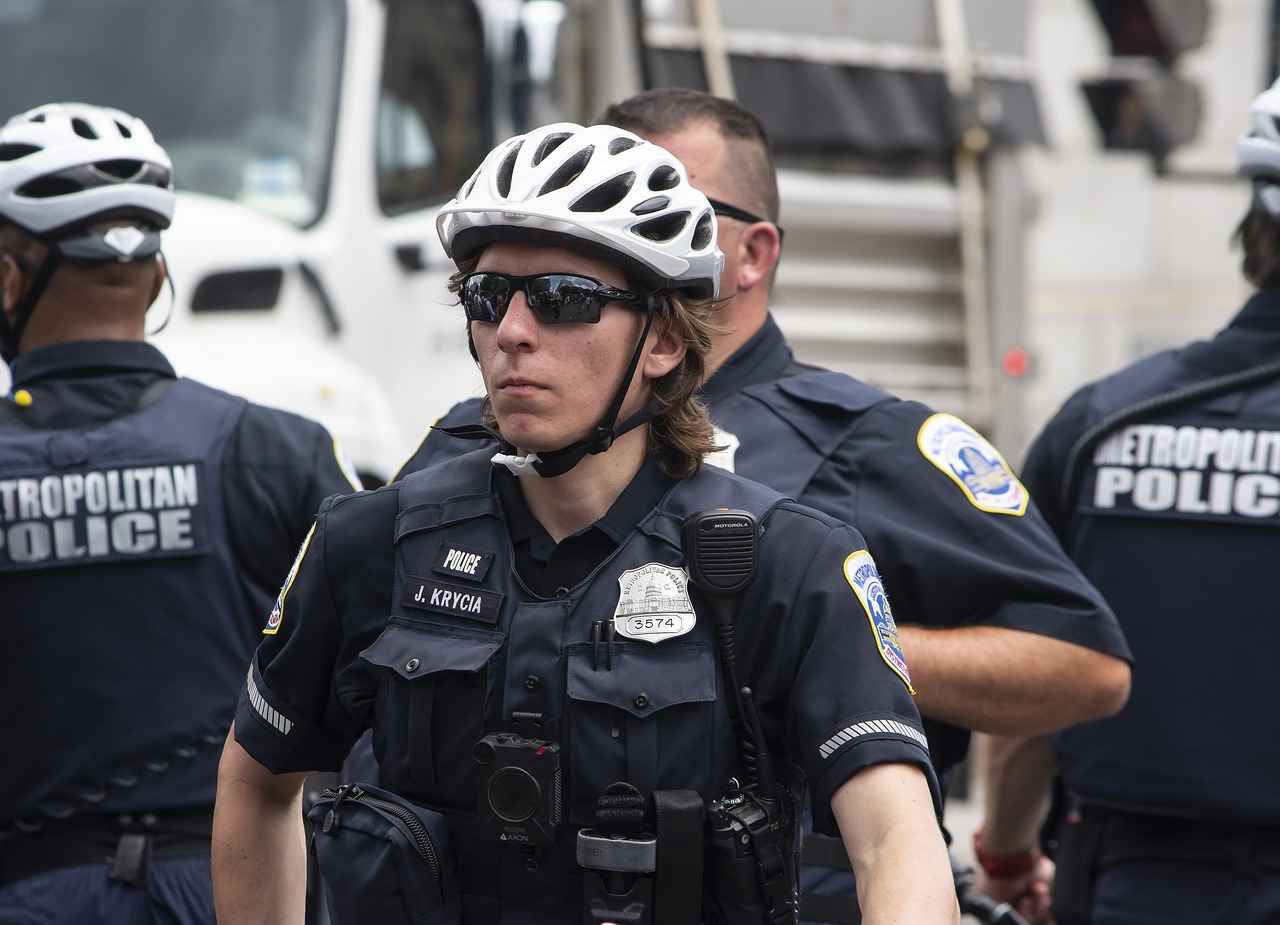
Character Development and Design
The creation of Paw Patrol is a remarkable journey that showcases the intricate process of character development and design. Each pup in the series is meticulously crafted with distinct traits and skills, ensuring that they resonate with young audiences while imparting valuable lessons about teamwork and responsibility.
At the heart of the character design process is the idea that each pup represents a unique role within the team. For instance, Chase, the German Shepherd, is designed as the leader and police pup, embodying qualities of bravery and authority. His character teaches children the importance of leadership and making responsible decisions. Similarly, Marshall, the Dalmatian, serves as the firefighter, bringing a sense of humor and a willingness to help others, which emphasizes the value of community service.
The design team at Spin Master collaborated closely with child development experts to ensure that the traits and skills of each pup align with educational messages. This collaboration resulted in characters that not only appeal visually but also serve as role models for young viewers. The pups are equipped with various tools and vehicles that reflect their unique skills, reinforcing the concept that every individual has something special to contribute.
Moreover, the character creation process involved extensive brainstorming sessions to identify the specific needs and interests of the target audience. The design team utilized color psychology to create visually appealing characters that capture attention and convey their personalities effectively. For example, the vibrant colors of Rubble, the construction pup, symbolize creativity and enthusiasm, while Skye, the aviator pup, is adorned in pink, representing compassion and teamwork.
To further enhance the educational aspect of the show, each character is faced with challenges that require collaboration and problem-solving. This narrative structure not only entertains but also teaches children how to work together to overcome obstacles. The pups often engage in rescue missions that necessitate combining their unique skills, illustrating the importance of team dynamics and how every member plays a crucial role in achieving success.
In addition to their unique skills, the personalities of the pups are carefully crafted to reflect a diverse range of traits, ensuring that every child can find a character they relate to. This attention to detail fosters inclusivity and encourages children to embrace their individuality while learning from their peers. The balance of humor, adventure, and life lessons makes Paw Patrol a well-rounded show that resonates with both children and parents alike.
In summary, the character development and design of Paw Patrol are pivotal to its success. Each pup is not just a character but a representation of values that promote teamwork, responsibility, and community spirit. Through engaging storytelling and dynamic character interactions, the show effectively imparts essential life lessons, making it a beloved series for young audiences around the world.
Animation Style and Techniques
The animation style of Paw Patrol is a crucial element that contributes to the show’s overall appeal and effectiveness in engaging its young audience. This section will explore the various animation techniques employed in the series, highlighting how they enhance storytelling and visual experience.
Use of CGI in Paw Patrol
One of the standout features of Paw Patrol is its use of computer-generated imagery (CGI). This technique allows for vibrant colors and dynamic action sequences that captivate children. The decision to use CGI, rather than traditional hand-drawn animation, provides a polished and modern look that resonates well with today’s tech-savvy young viewers. The three-dimensional characters and environments create a more immersive experience, allowing children to feel as if they are part of the adventures alongside their favorite pups.
Character Design and Animation
Each character in Paw Patrol is designed with distinct traits and personalities, which is essential for storytelling. The animation team focuses on creating expressive movements and facial expressions that reflect the characters’ emotions and actions. For instance, the energetic movements of Chase, the police pup, are animated to convey his confidence and leadership, while Skye, the aviator pup, showcases graceful flying animations that highlight her adventurous spirit. This attention to detail in character animation not only entertains but also teaches children about individuality and teamwork.
Color Theory in Animation
Color plays a significant role in Paw Patrol‘s animation style. The use of bright and bold colors is intentional, as it captures the attention of young viewers and stimulates their imagination. Each pup is associated with specific colors that not only represent their personality but also make them easily recognizable. For example, Marshall is often seen in red, symbolizing his fire-fighting role, while Rubble’s yellow attire reflects his construction background. This strategic use of color enhances the visual storytelling and helps children associate colors with different characters and their respective traits.
Sound Design and Its Impact
In addition to visual elements, sound design is integral to the animation style of Paw Patrol. The series employs various sound effects that complement the animation, making scenes more engaging. From the sounds of barking to the whirring of helicopter blades, these audio elements enhance the action and create a more immersive experience. Furthermore, the show’s catchy theme song, paired with its lively animation, establishes a strong connection with the audience, making it memorable and enjoyable.
Dynamic Action Sequences
The animation techniques used in Paw Patrol also allow for dynamic action sequences that keep young viewers on the edge of their seats. The combination of fast-paced editing and smooth transitions between scenes creates a sense of excitement and adventure. Whether the pups are racing to save a kitten stuck in a tree or embarking on a daring rescue mission, the animation style effectively conveys the urgency and thrill of each situation.
Educational Aspects of Animation
Beyond entertainment, the animation techniques in Paw Patrol serve an educational purpose. The show incorporates problem-solving scenarios that encourage critical thinking and teamwork among its viewers. The clear visual representation of challenges faced by the characters helps children understand the importance of collaboration and communication. By presenting these lessons through engaging animation, Paw Patrol successfully imparts valuable life skills to its young audience.
In summary, the animation style and techniques used in Paw Patrol are pivotal to the show’s success. Through the use of CGI, thoughtful character design, vibrant color palettes, and effective sound design, the series creates an engaging and educational experience for children. These elements not only entertain but also foster important values, making Paw Patrol a beloved series among young audiences and their families.
Paw Patrol,
Paw Patrol has captured the hearts of children worldwide since its debut. This article delves into the fascinating creation of Paw Patrol, exploring its development, characters, and cultural impact while providing insights into the show’s production process and its creators’ vision.
Origins of Paw Patrol
Discover the initial concept and inspiration behind Paw Patrol, including how the idea evolved from a simple premise into a beloved children’s series. The show was first pitched by Keith Chapman, who envisioned a group of rescue dogs led by a boy named Ryder, emphasizing themes of teamwork and community service.
Creators and Production Team
Learn about the key figures behind Paw Patrol, including its creator, Keith Chapman, and the talented team of animators, writers, and producers who brought the show to life. The collaboration between Spin Master and Nickelodeon was essential in developing the series.
The Vision of Keith Chapman
Explore Keith Chapman’s background and his vision for Paw Patrol, which combines adventure, teamwork, and problem-solving in a format that appeals to preschoolers and their parents alike. His previous work on Bob the Builder laid the groundwork for creating engaging, educational content.
The Role of Spin Master
Understand how Spin Master, the toy and entertainment company, played a crucial role in developing Paw Patrol, from its initial concept to the extensive merchandising that followed. Their involvement ensured that the show not only entertained but also generated a wide range of products.
Character Development and Design
Delve into the character creation process, including how each pup was designed with unique traits and skills. This thoughtful design contributes to the show’s educational messages about teamwork and responsibility, making each character relatable to young viewers.
Animation Style and Techniques
Uncover the animation techniques used in Paw Patrol, including the decision to employ CGI, which allows for vibrant visuals and dynamic action sequences that engage young viewers. The animation style enhances the storytelling, making it visually appealing.
Influence of Color and Sound
Explore how color theory and sound design are utilized in Paw Patrol to enhance storytelling and create an immersive experience for its audience. The strategic use of colors and sounds makes the show captivating and memorable.
Music and Theme Songs
Investigate the role of music in Paw Patrol, including the catchy theme song that has become iconic. This music helps to establish the show’s identity and connect with its young audience, making it instantly recognizable.
Cultural Impact and Reception
Analyze the cultural significance of Paw Patrol, examining its reception among parents and children. The show has influenced children’s programming and educational content, setting a standard for future series.
Merchandising Success
Learn about the extensive range of merchandise inspired by Paw Patrol, from toys to clothing. This merchandising has contributed to the show’s popularity and financial success, making it a staple in children’s entertainment.
Global Reach and Adaptations
Explore how Paw Patrol has expanded its reach internationally, including adaptations in various languages and cultures. Its impact on children’s entertainment across the globe showcases its universal appeal and relevance.
including the decision to employ CGI, which allows for vibrant visuals and dynamic action sequences that engage young viewers.
Paw Patrol has become a household name in children’s entertainment, captivating young audiences with its engaging stories and vibrant characters. At the heart of its success lies the decision to utilize CGI (Computer-Generated Imagery), a choice that has allowed the show to deliver stunning visuals and dynamic action sequences.
The use of CGI in Paw Patrol was a pivotal decision made by the production team. This animation technique not only enhances the visual appeal but also brings the adventurous world of Adventure Bay to life. With bright colors and smooth animations, the show effectively captures the attention of preschoolers, making it an ideal choice for young viewers.
- Vibrant Visuals: The CGI animation style allows for a more colorful and engaging aesthetic. Each character and setting is designed with attention to detail, creating a visually stimulating experience.
- Dynamic Action Sequences: The flexibility of CGI enables the creation of thrilling action scenes that keep children on the edge of their seats. From high-speed chases to daring rescues, the animation enhances the excitement of each episode.
- Character Design: Each pup in Paw Patrol is uniquely designed with distinct traits and skills, all of which are brought to life through CGI. This not only aids in storytelling but also helps convey important messages about teamwork and responsibility.
Moreover, the decision to employ CGI aligns with the show’s educational goals. The vibrant visuals and engaging animation not only entertain but also serve to enhance cognitive development in young viewers. Research shows that colorful and dynamic visuals can improve attention spans and learning outcomes in children.
The sound design in Paw Patrol complements the CGI visuals, further immersing the audience in the show’s adventures. The use of sound effects and a catchy theme song creates an engaging auditory experience that resonates with children. The theme song, in particular, has become iconic, helping to establish the show’s identity and making it memorable for its audience.
In addition to its captivating visuals and sound, Paw Patrol has made a significant cultural impact. The series has been embraced by parents and children alike, praised for its positive messages and entertaining storylines. The show’s success has led to an extensive range of merchandise, from toys to clothing, contributing to its financial success and further solidifying its place in children’s entertainment.
Globally, Paw Patrol has expanded its reach, with adaptations in various languages and cultures. This international appeal showcases the show’s universal themes of teamwork and problem-solving, making it relatable to children around the world.
In conclusion, the decision to utilize CGI in Paw Patrol has played a crucial role in the show’s success. By combining vibrant visuals with dynamic storytelling, the creators have crafted a beloved series that not only entertains but also educates young audiences. The innovative use of animation techniques continues to set Paw Patrol apart in the realm of children’s programming, ensuring its place as a staple in family entertainment.
Influence of Color and Sound
The world of Paw Patrol is not just visually engaging; it is meticulously crafted to resonate with its young audience through the strategic use of color theory and sound design. These elements work together to enhance storytelling, create emotional connections, and facilitate learning in a fun and engaging manner.
Understanding Color Theory
Color plays a vital role in the way children perceive and interact with media. In Paw Patrol, each character is associated with a specific color that reflects their personality and role within the team. For example:
| Character | Color | Role |
|---|---|---|
| Chase | Blue | Police Pup |
| Marshall | Red | Firefighter Pup |
| Skye | Pink | Aviation Pup |
This use of color not only aids in character recognition but also imparts subtle lessons about teamwork and diversity. Bright, vibrant colors capture children’s attention and stimulate their imagination, making the viewing experience more enjoyable and memorable.
The Role of Sound Design
Sound design is equally crucial in Paw Patrol. The show employs a variety of sound effects and musical cues to enhance the narrative and engage viewers. For instance:
- Catchy Theme Song: The theme song is designed to be memorable and easy to sing along with, reinforcing the show’s identity.
- Character Sounds: Each pup has unique sound effects that reflect their personality and actions, making them more relatable to young viewers.
- Emotional Cues: Background music is used to set the emotional tone of scenes, whether it’s excitement during a rescue mission or calmness during problem-solving moments.
Research indicates that sound can significantly affect a child’s emotional response and engagement levels. The combination of upbeat music and sound effects helps to create an immersive experience that encourages active participation from young viewers.
Creating an Immersive Experience
The integration of color and sound in Paw Patrol goes beyond mere aesthetics; it is a deliberate strategy to foster an immersive environment that promotes learning. By engaging multiple senses, the show captivates its audience, making lessons about teamwork, empathy, and problem-solving more impactful.
Moreover, the creators carefully consider the pacing of sound and visuals to maintain the attention of preschoolers. Quick transitions and lively music keep the energy high, ensuring that children remain engaged throughout each episode.
In conclusion, the thoughtful application of color theory and sound design in Paw Patrol not only enhances the show’s entertainment value but also serves educational purposes. By creating an engaging and immersive experience, the show effectively captures the hearts and minds of its young audience, making it a beloved staple in children’s programming.
Paw Patrol
is a beloved children’s television series that has captured the hearts of young audiences worldwide. This article delves into the fascinating creation of , exploring its development, characters, and cultural impact while providing insights into the show’s production process and its creators’ vision.
Origins of Paw Patrol
Discover the initial concept and inspiration behind , including how the idea evolved from a simple premise into a beloved children’s series. The show was conceived by Keith Chapman, who aimed to create a series that emphasizes teamwork and problem-solving through the adventures of rescue pups.
Creators and Production Team
Learn about the key figures behind , including its creator, Keith Chapman, and the talented team of animators, writers, and producers who brought the show to life. The collaboration among these individuals was crucial in shaping the show’s engaging narrative and vibrant characters.
The Vision of Keith Chapman
Explore Keith Chapman’s background and his vision for , which combines adventure, teamwork, and problem-solving in a format that appeals to preschoolers and their parents alike. Chapman’s approach focuses on positive messages and relatable scenarios for young viewers.
Chapman’s Previous Work
Examine Keith Chapman’s previous successes, including Bob the Builder, and how they influenced his approach to creating a new franchise focusing on rescue missions and community values. His experience in children’s programming provided a solid foundation for .
The Role of Spin Master
Understand how Spin Master, the toy and entertainment company, played a crucial role in developing , from its initial concept to the extensive merchandising that followed. Their involvement ensured that the show’s characters were brought to life through toys, further enhancing its popularity.
Character Development and Design
Delve into the character creation process, including how each pup was designed with unique traits and skills, contributing to the show’s educational messages about teamwork and responsibility. Each character represents different professions and values, making them relatable to children.
Animation Style and Techniques
Uncover the animation techniques used in , including the decision to employ CGI, which allows for vibrant visuals and dynamic action sequences that engage young viewers. This modern approach to animation has set a standard in children’s programming.
Influence of Color and Sound
Explore how color theory and sound design are utilized in to enhance storytelling and create an immersive experience for its audience. The vibrant colors and engaging soundtracks help in capturing the attention of young viewers.
Music and Theme Songs
Investigate the role of music in , including the catchy theme song that has become iconic, helping to establish the show’s identity and connect with its young audience. The music plays a significant role in making the show memorable and enjoyable.
Cultural Impact and Reception
Analyze the cultural significance of , examining its reception among parents and children, as well as its influence on children’s programming and educational content. The show has sparked discussions about community service and teamwork.
Merchandising Success
Learn about the extensive range of merchandise inspired by , from toys to clothing, and how this has contributed to the show’s popularity and financial success. The merchandise extends the show’s reach beyond the screen and into children’s daily lives.
Global Reach and Adaptations
Explore how has expanded its reach internationally, including adaptations in various languages and cultures, and its impact on children’s entertainment across the globe. The show’s universal themes of friendship and cooperation resonate with audiences worldwide.
to enhance storytelling and create an immersive experience for its audience, making it appealing and memorable.
Paw Patrol has captured the hearts of children around the world, but what makes it so engaging? This article explores how the show enhances storytelling and creates an immersive experience for its audience, making it both appealing and memorable.
The key to Paw Patrol’s success lies in its animation style and sound design. The use of CGI animation allows for vibrant visuals that bring the characters and their adventures to life. Each episode is crafted with a keen attention to detail, ensuring that young viewers are not only entertained but also engaged. The dynamic action sequences keep children on the edge of their seats, while the colorful landscapes and lively character designs stimulate their imagination.
- Color Theory: The show employs a thoughtful color palette that is both bright and appealing. Colors are chosen to evoke specific emotions and reactions, making scenes more impactful. For example, warm colors like red and yellow are often used during moments of excitement, while cooler colors such as blue and green are prevalent in calmer scenes.
- Sound Design: The sound effects and background music play a crucial role in storytelling. Each character has distinct sounds that enhance their personality, while the background music sets the tone for various scenes. The incorporation of catchy tunes and rhythmic patterns helps to create a memorable auditory experience.
A significant aspect of Paw Patrol is its theme song. The catchy lyrics and upbeat melody not only introduce the characters but also establish the show’s identity. Children often sing along, which fosters a sense of connection to the show. This musical element is vital in making the series memorable and encourages repeat viewership.
Moreover, the show’s narrative structure is designed to be easily digestible for preschoolers. Each episode typically follows a simple formula: a problem arises, the pups work together to solve it, and they ultimately succeed through teamwork and clever problem-solving. This format not only entertains but also teaches valuable lessons about collaboration and responsibility.
In addition to its engaging visuals and sound, Paw Patrol incorporates educational content into its stories. The characters often face challenges that require critical thinking and creativity, encouraging young viewers to think about how they would solve similar problems. This educational aspect reinforces the show’s appeal to parents, who appreciate its positive messages.
Furthermore, the cultural impact of Paw Patrol cannot be overlooked. The show has resonated with families globally, leading to adaptations in various languages and cultural contexts. This global reach has allowed it to become a staple in children’s programming, influencing the way stories are told in similar shows.
In conclusion, Paw Patrol stands out in children’s entertainment due to its effective use of animation, sound design, and educational storytelling. By creating an immersive experience that captivates its young audience, the show not only entertains but also imparts important life lessons, making it a beloved series for both children and their parents.
Music and Theme Songs
Music plays a crucial role in the success of children’s shows, and Paw Patrol is no exception. The series, which has captured the hearts of young audiences globally, utilizes music not only as a form of entertainment but also as a powerful tool for storytelling and engagement. This section explores the various aspects of music and theme songs in Paw Patrol, highlighting their significance in creating a memorable viewing experience.
The theme song of Paw Patrol is one of the most recognizable elements of the show. Composed to be both catchy and easy to sing along with, it establishes the show’s identity right from the start. The lyrics introduce the main characters and their roles, setting the stage for the adventures that follow. This immediate connection helps children to recognize and remember the characters, enhancing their overall viewing experience.
Throughout each episode, music is strategically used to enhance the storytelling. Different musical cues accompany various scenes, helping to convey emotions and build tension. For instance, upbeat melodies are often played during moments of triumph or teamwork, while softer, more subdued music accompanies scenes that require empathy or reflection. This use of music not only entertains but also teaches children about emotional responses and situational awareness.
The incorporation of music in Paw Patrol also serves an educational purpose. Songs within the episodes often contain messages about teamwork, friendship, and problem-solving. By embedding these lessons into musical formats, the show makes it easier for children to absorb important values. The repetition of catchy phrases and melodies reinforces these concepts, allowing kids to learn while they play.
Each character in Paw Patrol has their own theme music that reflects their unique personality and skills. For example, Chase, the police pup, has a theme that conveys a sense of authority and bravery, while Skye, the aviator pup, features a more whimsical and adventurous tune. This character-specific music helps to deepen the audience’s connection to each pup, making them more relatable and memorable.
In addition to the core music team, Paw Patrol has featured collaborations with guest artists, adding a fresh twist to its musical repertoire. These collaborations often result in special episodes that highlight different musical styles, exposing young viewers to a variety of genres. This not only keeps the content engaging but also broadens children’s musical horizons, encouraging an appreciation for diverse forms of music.
The popularity of the Paw Patrol theme song and its various musical elements has led to an extensive range of merchandise, including sing-along toys and musical albums. This merchandise allows children to interact with the music beyond the screen, fostering a deeper connection to the show. Parents have noted that these musical toys encourage imaginative play, as children recreate scenes and adventures inspired by the series.
In summary, the role of music in Paw Patrol extends far beyond mere entertainment. It is an integral component of the show’s identity, enhancing storytelling, providing educational value, and fostering emotional connections. Through catchy theme songs and character-specific tunes, Paw Patrol successfully engages its young audience, making music an essential element of its enduring popularity.
Paw Patrol,
How Paw Patrol Was Created: Behind-the-Scenes Facts
This article delves into the fascinating creation of Paw Patrol, exploring its development, characters, and cultural impact while providing insights into the show’s production process and its creators’ vision.
Origins of Paw Patrol
Discover the initial concept and inspiration behind Paw Patrol, including how the idea evolved from a simple premise into a beloved children’s series that captures the hearts of young audiences worldwide.
Creators and Production Team
Learn about the key figures behind Paw Patrol, including its creator, Keith Chapman, and the talented team of animators, writers, and producers who brought the show to life.
The Vision of Keith Chapman
Explore Keith Chapman’s background and his vision for Paw Patrol, which combines adventure, teamwork, and problem-solving in a format that appeals to preschoolers and their parents alike.
Chapman’s Previous Work
Examine Keith Chapman’s previous successes, including Bob the Builder, and how they influenced his approach to creating a new franchise focusing on rescue missions and community values.
The Role of Spin Master
Understand how Spin Master, the toy and entertainment company, played a crucial role in developing Paw Patrol, from its initial concept to the extensive merchandising that followed.
Character Development and Design
Delve into the character creation process, including how each pup was designed with unique traits and skills, contributing to the show’s educational messages about teamwork and responsibility.
Animation Style and Techniques
Uncover the animation techniques used in Paw Patrol, including the decision to employ CGI, which allows for vibrant visuals and dynamic action sequences that engage young viewers.
Influence of Color and Sound
Explore how color theory and sound design are utilized in Paw Patrol to enhance storytelling and create an immersive experience for its audience, making it appealing and memorable.
Music and Theme Songs
Investigate the role of music in Paw Patrol, including the catchy theme song that has become iconic, helping to establish the show’s identity and connect with its young audience.
Cultural Impact and Reception
Analyze the cultural significance of Paw Patrol, examining its reception among parents and children, as well as its influence on children’s programming and educational content.
Merchandising Success
Learn about the extensive range of merchandise inspired by Paw Patrol, from toys to clothing, and how this has contributed to the show’s popularity and financial success.
Global Reach and Adaptations
Explore how Paw Patrol has expanded its reach internationally, including adaptations in various languages and cultures, and its impact on children’s entertainment across the globe.
including the catchy theme song that has become iconic, helping to establish the show’s identity and connect with its young audience.
Paw Patrol has captured the hearts of many young viewers around the world, and a significant part of its appeal lies in its catchy theme song. This article explores how the theme song has become an iconic element of the show, helping to establish its identity and connect with its audience.
The theme song of Paw Patrol is not just a musical introduction; it is a vital component that sets the tone for each episode. The lyrics are simple yet engaging, making it easy for children to sing along. This sing-along aspect encourages participation, which is crucial for young viewers as it fosters a sense of belonging and excitement. The repetitive nature of the song helps reinforce the show’s core themes of teamwork and adventure.
- Engaging Lyrics: The lyrics are designed to be memorable and easy to understand, allowing children to quickly learn and recite them.
- Catchy Melody: The upbeat and lively melody captures the attention of children, making it instantly recognizable.
- Character Introduction: The theme song introduces the main characters, giving viewers a glimpse of their unique traits and roles within the team.
The impact of the theme song extends beyond mere entertainment. According to music psychologists, catchy tunes can enhance memory retention, making it easier for children to recall the lessons presented in each episode. The song effectively encapsulates the show’s message of teamwork and problem-solving, reinforcing these values in a fun and engaging way.
Moreover, the theme song has contributed significantly to Paw Patrol‘s branding. Its distinctive sound and melody are often associated with the show’s identity, making it a recognizable jingle in children’s media. This branding extends to merchandise, where the theme song is often featured in toys and games, further embedding the show’s values in the minds of its young audience.
Another important aspect of the theme song is its role in creating an emotional connection with the audience. The upbeat tempo and cheerful lyrics evoke feelings of happiness and excitement, which are essential for keeping children engaged. This emotional resonance is crucial in children’s programming, as it helps to create a positive viewing experience.
In addition to its catchy melody and engaging lyrics, the theme song has also undergone various adaptations. As Paw Patrol has expanded internationally, localized versions of the theme song have been created to resonate with different cultures. These adaptations maintain the original’s spirit while incorporating local languages and musical styles, allowing the show to connect with a broader audience.
Furthermore, the theme song’s popularity has led to various covers and remixes by fans, showcasing its widespread appeal. This phenomenon not only highlights the song’s catchy nature but also fosters a community of fans who share their love for the show and its music.
In conclusion, the theme song of Paw Patrol is more than just an introduction to the show; it is a fundamental part of its identity. Through engaging lyrics, a catchy melody, and emotional resonance, the song effectively connects with its young audience. Its impact on branding, memory retention, and cultural adaptation further cements its status as an iconic element of the Paw Patrol franchise.
Cultural Impact and Reception
Paw Patrol has significantly influenced children’s entertainment since its debut, resonating with audiences around the globe. Its cultural impact extends beyond mere entertainment, shaping values, behaviors, and perceptions among young viewers.
The cultural significance of Paw Patrol can be analyzed through various lenses, including its portrayal of teamwork, community service, and problem-solving. The show emphasizes the importance of working together to overcome challenges, a message that aligns with educational goals in early childhood development.
Parents have generally embraced Paw Patrol for its positive messages and engaging content. The series has been praised for its ability to entertain while imparting valuable life lessons. Children, on the other hand, are drawn to the colorful characters and exciting adventures, making it a staple in many households.
Paw Patrol has set a new standard in children’s programming, paving the way for shows that prioritize educational content alongside entertainment. Its success has inspired other creators to incorporate similar themes of teamwork and community responsibility in their productions, thereby enriching the landscape of children’s television.
The show’s popularity has led to an extensive range of merchandise, including toys, clothing, and accessories. This merchandising success not only reflects the show’s cultural significance but also highlights its economic impact. The revenue generated from Paw Patrol products has contributed to the growth of the children’s entertainment industry, demonstrating the financial viability of quality programming.
Paw Patrol has transcended cultural boundaries, with adaptations in various languages and regions. This global reach illustrates the show’s universal themes of friendship and heroism, making it relatable to children from diverse backgrounds. The ability to resonate across cultures speaks to the show’s strong narrative and character development.
The incorporation of educational elements in Paw Patrol has been a focal point of its cultural significance. Each episode typically includes problem-solving scenarios that encourage critical thinking among young viewers. This approach not only entertains but also aids in cognitive development, making the show a valuable educational tool.
Paw Patrol has also engaged with community initiatives, promoting social responsibility among its young audience. Through various campaigns and partnerships, the show has encouraged children to participate in community service, fostering a sense of responsibility and empathy.
The cultural impact of Paw Patrol is profound, influencing children’s programming, parental perceptions, and educational content. Its emphasis on teamwork, community service, and problem-solving resonates with audiences worldwide, making it a significant contributor to the landscape of children’s entertainment.
Paw Patrol,
Paw Patrol has become a household name, captivating the hearts of children and parents alike. This article delves into the fascinating creation of Paw Patrol, exploring its development, characters, and cultural impact while providing insights into the show’s production process and its creators’ vision.
Origins of Paw Patrol
The initial concept of Paw Patrol was born from a simple premise that evolved into a beloved children’s series. The idea was to create a show that not only entertains but also imparts valuable life lessons. The show debuted in 2013, quickly capturing the attention of young audiences worldwide.
Creators and Production Team
At the helm of Paw Patrol is its creator, Keith Chapman. He is backed by a talented team of animators, writers, and producers who brought the show to life. Chapman’s vision for the series combines adventure, teamwork, and problem-solving, making it appealing to preschoolers and their parents alike.
Chapman’s Previous Work
Before Paw Patrol, Keith Chapman created Bob the Builder, a series that emphasized teamwork and community values. This previous success influenced his approach to crafting a new franchise centered around rescue missions.
The Role of Spin Master
Spin Master, a toy and entertainment company, played a crucial role in developing Paw Patrol. From its initial concept to extensive merchandising, Spin Master has helped the franchise grow into a multi-million dollar brand.
Character Development and Design
The character creation process in Paw Patrol involved designing each pup with unique traits and skills. This thoughtful design contributes to the show’s educational messages about teamwork and responsibility, making each character relatable and engaging for young viewers.
Animation Style and Techniques
The show employs cutting-edge CGI animation, which allows for vibrant visuals and dynamic action sequences. This technique engages young viewers and enhances the overall storytelling experience.
Influence of Color and Sound
Color theory and sound design play significant roles in Paw Patrol. The vibrant colors and engaging sounds create an immersive experience that captivates its audience, making the show both appealing and memorable.
Music and Theme Songs
The catchy theme song of Paw Patrol has become iconic, helping to establish the show’s identity. Music is integral to the series, enhancing emotional connections and making it more relatable to its young audience.
Cultural Impact and Reception
Paw Patrol has made a significant cultural impact, receiving positive reception from both parents and children. It has influenced children’s programming and educational content, setting a standard for future shows.
Merchandising Success
The extensive range of merchandise inspired by Paw Patrol includes toys, clothing, and accessories. This merchandising success has contributed to the show’s popularity and financial success, making it a staple in children’s entertainment.
Global Reach and Adaptations
Paw Patrol has expanded its reach internationally, with adaptations in various languages and cultures. Its impact on children’s entertainment across the globe showcases its universal appeal and relevance.
examining its reception among parents and children, as well as its influence on children’s programming and educational content.
Paw Patrol has become a household name, captivating young audiences around the world. This article examines its reception among parents and children, as well as its influence on children’s programming and educational content.
The show’s premise revolves around a group of rescue dogs led by a boy named Ryder, who work together to protect their community. This concept resonates with children, as it emphasizes themes of teamwork, problem-solving, and community service. Parents appreciate these messages, as they align with educational values that promote cooperation and empathy.
One of the most significant aspects of Paw Patrol’s reception is its ability to engage children through relatable characters and exciting storylines. Each pup has unique skills and personalities, making it easy for children to identify with them. For instance, Chase, the police pup, embodies leadership and responsibility, while Skye, the aviator pup, represents courage and adventure. This variety allows children to see themselves in these characters, enhancing their connection to the show.
Moreover, the show has received positive feedback from parents for its educational content. The episodes often incorporate lessons on problem-solving and critical thinking, encouraging children to think creatively when faced with challenges. This educational angle sets Paw Patrol apart from many other children’s shows, making it a preferred choice for parents looking for quality programming.
In terms of cultural impact, Paw Patrol has significantly influenced children’s programming. Its success has prompted a wave of similar shows that focus on teamwork and community values. Programs like Bluey and Fireman Sam have emerged, drawing inspiration from Paw Patrol’s formula. This trend highlights the growing importance of educational content in children’s entertainment, as parents increasingly seek shows that offer more than just entertainment.
Furthermore, the show’s merchandising success has contributed to its cultural footprint. Paw Patrol toys, clothing, and accessories are widely available, making it a staple in many households. This extensive range of merchandise not only reflects the show’s popularity but also reinforces its themes, as children engage with the characters in their daily lives through play.
On a global scale, Paw Patrol has expanded its reach, adapting to various cultures and languages. This international appeal underscores the show’s universal themes of friendship and community. By resonating with children across different backgrounds, Paw Patrol has solidified its status as a significant player in the landscape of children’s entertainment.
In summary, Paw Patrol’s reception among parents and children highlights its successful blend of entertainment and education. Its influence on children’s programming is evident in the emergence of similar shows that prioritize teamwork and problem-solving. As it continues to expand its global reach, Paw Patrol remains a beloved series that not only entertains but also teaches valuable life lessons.
Merchandising Success
Paw Patrol has not only captured the hearts of young viewers but has also become a merchandising phenomenon. The extensive range of merchandise inspired by this beloved series includes toys, clothing, accessories, and even home decor, making it a staple in many households around the world. This section explores the various aspects of Paw Patrol’s merchandising success and its impact on the brand’s popularity.
- Toy Line Expansion: The core of Paw Patrol’s merchandise is its toy line, featuring action figures, playsets, and vehicles that allow children to recreate their favorite rescue missions. The toys are designed to encourage imaginative play while promoting teamwork and problem-solving skills.
- Clothing and Apparel: From pajamas to backpacks, Paw Patrol clothing is a hit among young fans. The colorful designs featuring characters like Chase, Marshall, and Skye make these items appealing and fun for children to wear.
- Home Goods and Decor: The brand has extended its reach into home decor, offering bedding sets, wall art, and kitchenware that feature Paw Patrol themes. This allows fans to immerse themselves in the world of Paw Patrol even when they’re at home.
- Seasonal Merchandise: Special events and holidays see the release of limited-edition Paw Patrol merchandise, such as Halloween costumes and Christmas decorations. These seasonal items generate excitement and encourage fans to celebrate their love for the show throughout the year.
The success of Paw Patrol merchandise can be attributed to several factors:
- Brand Recognition: With its vibrant characters and engaging stories, Paw Patrol has established a strong brand identity that resonates with both children and parents. This recognition drives sales and fosters loyalty among fans.
- Quality and Safety: Parents prioritize safety when choosing toys for their children. The Paw Patrol merchandise adheres to strict safety standards, ensuring that products are safe for young users, which enhances trust in the brand.
- Marketing Strategies: Strategic marketing campaigns, including collaborations with retailers and promotional events, have effectively showcased Paw Patrol products. Engaging advertisements and social media presence further amplify the brand’s visibility.
- Global Reach: The international success of Paw Patrol has led to localized merchandise tailored to different markets. This global approach has expanded the brand’s footprint, making it accessible to children worldwide.
Furthermore, the synergy between the show and its merchandise creates a holistic experience for fans. Children who watch Paw Patrol are often eager to own toys and apparel featuring their favorite characters, reinforcing the show’s messages of teamwork and bravery. This interconnectedness between the content and products ensures that the brand remains relevant and continues to thrive in a competitive market.
In conclusion, the extensive range of merchandise inspired by Paw Patrol plays a crucial role in its overall success. By appealing to young audiences and their parents through quality products and effective marketing, Paw Patrol has solidified its place in the world of children’s entertainment and merchandising.
Paw Patrol,
Paw Patrol is a beloved children’s television series that has captured the hearts of young audiences around the world. This article delves into the fascinating creation of Paw Patrol, exploring its development, characters, and cultural impact while providing insights into the show’s production process and its creators’ vision.
Origins of Paw Patrol
The initial concept of Paw Patrol was inspired by the need to teach children about teamwork and problem-solving. The idea evolved from a simple premise into a beloved series that engages preschoolers through adventure and fun. The show’s creators aimed to instill values such as community service and responsibility in a format that resonates with young viewers.
Creators and Production Team
At the heart of Paw Patrol is its creator, Keith Chapman. With a background in children’s programming, Chapman envisioned a show that would combine action and education. His talented team of animators, writers, and producers worked diligently to bring this vision to life, ensuring the series was both entertaining and educational.
The Vision of Keith Chapman
Chapman’s vision for Paw Patrol was to create a series that emphasized the importance of teamwork and community. His previous work on Bob the Builder laid the foundation for his approach, focusing on rescue missions and the values of helping others.
The Role of Spin Master
Spin Master, a toy and entertainment company, played a crucial role in the development of Paw Patrol. From the initial concept to the extensive merchandising that followed, Spin Master helped to elevate the show into a global phenomenon.
Character Development and Design
The character creation process for Paw Patrol involved designing each pup with unique traits and skills. This thoughtful approach contributes to the show’s educational messages about teamwork and responsibility, making each character relatable and engaging for young viewers.
Animation Style and Techniques
The animation techniques used in Paw Patrol include CGI, which allows for vibrant visuals and dynamic action sequences. This choice enhances the storytelling and keeps young viewers engaged throughout each episode.
Influence of Color and Sound
Color theory and sound design play significant roles in Paw Patrol. The use of bright colors and engaging sound effects creates an immersive experience for its audience, making the show both appealing and memorable.
Music and Theme Songs
The music in Paw Patrol, particularly the catchy theme song, has become iconic. This melody helps to establish the show’s identity and connects with its young audience, making it an integral part of the viewing experience.
Cultural Impact and Reception
The cultural significance of Paw Patrol is evident in its reception among parents and children. The show has influenced children’s programming and educational content, paving the way for similar series that emphasize learning through entertainment.
Merchandising Success
The extensive range of merchandise inspired by Paw Patrol includes toys, clothing, and more. This merchandising success has contributed to the show’s popularity and financial success, making it a staple in children’s entertainment.
Global Reach and Adaptations
Paw Patrol has expanded its reach internationally, with adaptations in various languages and cultures. This global presence highlights the show’s impact on children’s entertainment across the globe, resonating with diverse audiences.
from toys to clothing, and how this has contributed to the show’s popularity and financial success.
Paw Patrol has become a household name, captivating children and parents alike with its engaging stories and lovable characters. This article explores the extensive range of merchandise inspired by the show, from toys to clothing, and how this has significantly contributed to its popularity and financial success.
The merchandising strategy behind Paw Patrol is a crucial element of its brand identity. The show’s creators understood early on that successful children’s programming often extends beyond the screen. By creating a diverse array of products, they ensured that fans could engage with their favorite characters in various ways.
| Type of Merchandise | Examples | Impact on Popularity |
|---|---|---|
| Toys | Action figures, playsets, plush toys | Encourages imaginative play and connection to the characters |
| Clothing | T-shirts, pajamas, costumes | Allows kids to express their fandom and enhances brand visibility |
| Accessories | Backpacks, lunchboxes, bedding | Integrates Paw Patrol into daily life, reinforcing brand loyalty |
The success of Paw Patrol merchandise can be attributed to its strong character design and relatable themes. Each pup has distinct traits and skills, which resonate with children, making them eager to own toys that represent their favorite characters. For instance, Chase, the police pup, and Marshall, the fire pup, are often seen as role models, embodying values such as teamwork and bravery.
Furthermore, the show’s catchy theme song and vibrant animation style contribute to its appeal. The music not only entertains but also enhances brand recognition. Children often associate the theme song with the excitement of their favorite episodes, prompting parents to purchase related merchandise.
Another factor in the merchandising success is the strategic partnerships with retailers. Paw Patrol products are widely available in stores, making it easy for parents to find and purchase items. This accessibility has played a significant role in keeping the brand in the minds of consumers.
Additionally, seasonal promotions and collaborations with popular stores have helped maintain the brand’s visibility. During holidays, special editions of toys and clothing are released, creating a sense of urgency and excitement among fans. This approach not only boosts sales but also keeps the show relevant in the competitive children’s entertainment market.
As the brand continues to grow, Paw Patrol has expanded its global reach. The show has been adapted into various languages and cultures, further increasing its merchandise sales internationally. This global strategy has allowed the brand to tap into new markets, significantly contributing to its financial success.
In conclusion, the extensive range of Paw Patrol merchandise—from toys to clothing—has played a pivotal role in the show’s popularity and financial success. By creating products that resonate with children and parents alike, the brand has established a strong presence in the children’s entertainment industry. This strategy not only enhances the viewing experience but also fosters a lasting connection between the audience and the beloved characters of Paw Patrol.
Global Reach and Adaptations
Paw Patrol has become a global phenomenon, captivating children and parents alike with its engaging stories and lovable characters. This section explores the show’s remarkable international reach and the various adaptations that have contributed to its success across different cultures.
Since its debut, Paw Patrol has expanded beyond its Canadian roots, reaching audiences in over 160 countries. The show’s universal themes of teamwork, friendship, and problem-solving resonate with children worldwide, making it a staple in children’s programming. The series has been dubbed and subtitled in multiple languages, ensuring that it is accessible to a diverse audience. This global approach not only enhances its popularity but also allows local cultures to connect with the show’s core messages.
Paw Patrol’s adaptability is one of its key strengths. In different regions, the series has been tailored to reflect local customs and values. For example, in some countries, the pups are given names and traits that resonate more with local audiences. This cultural adaptation helps children relate to the characters and their adventures more personally.
- Merchandising Partnerships: Various toy companies around the world have partnered with Paw Patrol to create region-specific merchandise, from plush toys to clothing, ensuring that the brand remains relevant and appealing to local markets.
- Localized Episodes: Some adaptations include special episodes that incorporate local festivals or traditions, further embedding the show into the cultural fabric of the regions it serves.
- Collaborative Events: The franchise has organized international events, such as live shows and meet-and-greet sessions with the characters, allowing fans to engage with Paw Patrol in a unique and memorable way.
The success of Paw Patrol has influenced children’s programming worldwide. Its emphasis on teamwork and community service has inspired similar shows to incorporate educational elements into their narratives. This shift reflects a growing trend in children’s media to blend entertainment with valuable life lessons.
While the global reach of Paw Patrol has opened many doors, it has also presented challenges. Maintaining the show’s core values while adapting to various cultural contexts requires careful consideration. However, these challenges also create opportunities for innovation and creativity, allowing the franchise to grow and evolve while remaining true to its mission of promoting positive values.
In summary, Paw Patrol has successfully navigated the complexities of global reach and cultural adaptation. Its ability to resonate with diverse audiences, coupled with strategic partnerships and localized content, has solidified its place as a leader in children’s entertainment. This ongoing evolution not only enhances the show’s appeal but also ensures its relevance in an ever-changing media landscape.
Paw Patrol
How Paw Patrol Was Created: Behind-the-Scenes Facts
This article delves into the fascinating creation of , exploring its development, characters, and cultural impact while providing insights into the show’s production process and its creators’ vision.
Origins of Paw Patrol
Discover the initial concept and inspiration behind , including how the idea evolved from a simple premise into a beloved children’s series that captures the hearts of young audiences worldwide. The show was developed by Spin Master, a Canadian toy company, and premiered in 2013. Its unique approach to storytelling and character development quickly made it a favorite among children and parents alike.
Creators and Production Team
Learn about the key figures behind , including its creator, Keith Chapman, and the talented team of animators, writers, and producers who brought the show to life. Keith’s vision was to create a series that not only entertained but also taught valuable lessons about teamwork and community service.
- The Vision of Keith Chapman: Explore Keith Chapman’s background and his vision for , which combines adventure, teamwork, and problem-solving in a format that appeals to preschoolers and their parents alike.
- Chapman’s Previous Work: Examine Keith Chapman’s previous successes, including Bob the Builder, and how they influenced his approach to creating a new franchise focusing on rescue missions and community values.
- The Role of Spin Master: Understand how Spin Master, the toy and entertainment company, played a crucial role in developing , from its initial concept to the extensive merchandising that followed.
Character Development and Design
Delve into the character creation process, including how each pup was designed with unique traits and skills, contributing to the show’s educational messages about teamwork and responsibility. The characters, such as Chase, Marshall, and Skye, each represent different professions and skills, teaching children about various roles in society.
Animation Style and Techniques
Uncover the animation techniques used in , including the decision to employ CGI, which allows for vibrant visuals and dynamic action sequences that engage young viewers. The animation style is bright and colorful, making it visually appealing to its target audience.
- Influence of Color and Sound: Explore how color theory and sound design are utilized in to enhance storytelling and create an immersive experience for its audience, making it appealing and memorable.
- Music and Theme Songs: Investigate the role of music in , including the catchy theme song that has become iconic, helping to establish the show’s identity and connect with its young audience.
Cultural Impact and Reception
Analyze the cultural significance of , examining its reception among parents and children, as well as its influence on children’s programming and educational content. The series has received positive reviews for its engaging content and educational value.
- Merchandising Success: Learn about the extensive range of merchandise inspired by , from toys to clothing, and how this has contributed to the show’s popularity and financial success.
- Global Reach and Adaptations: Explore how has expanded its reach internationally, including adaptations in various languages and cultures, and its impact on children’s entertainment across the globe.
has expanded its reach internationally, including adaptations in various languages and cultures, and its impact on children’s entertainment across the globe.
Paw Patrol has become a global phenomenon, captivating the hearts of children and parents alike. Since its debut, the show has expanded its reach internationally, adapting to various languages and cultures, and significantly impacting children’s entertainment across the globe. This article delves into how Paw Patrol has successfully navigated the international landscape, enhancing its cultural relevance and appeal.
Global Reach of Paw Patrol
Initially launched in Canada, Paw Patrol quickly gained popularity, leading to its distribution in numerous countries. The show’s universal themes of teamwork, friendship, and community service resonate with audiences worldwide, making it adaptable to different cultural contexts. The ability to translate not only the language but also the essence of the show has been crucial in its international success.
Adaptations in Various Languages
- Localization Efforts: When adapting Paw Patrol for international markets, the production team focuses on localizing content. This includes translating dialogue and adjusting cultural references to ensure they resonate with local audiences.
- Voice Acting: The selection of voice actors who can authentically represent the characters in different languages adds a layer of familiarity and relatability for young viewers.
- Regional Themes: Some adaptations incorporate regional themes or stories that align with local values, enhancing the connection with the audience.
Cultural Impact of Paw Patrol
The show’s cultural significance extends beyond entertainment. Paw Patrol promotes positive messages about teamwork, problem-solving, and community service, which are universally appreciated values. Parents often commend the show for teaching children about responsibility and empathy through engaging storytelling.
Merchandising and Brand Expansion
The success of Paw Patrol is also reflected in its extensive range of merchandise, which includes toys, clothing, and educational materials. This merchandising success not only generates revenue but also reinforces the show’s presence in the daily lives of children. The brand’s expansion into different markets has led to collaborations with local companies, further embedding Paw Patrol into various cultures.
Educational Impact
As Paw Patrol continues to grow, it has also influenced children’s programming by setting a standard for educational content. The show’s ability to blend entertainment with learning has inspired other creators to incorporate similar values into their programming. This shift towards educational entertainment is evident in various countries, where Paw Patrol serves as a benchmark for quality children’s shows.
Conclusion
In summary, Paw Patrol has successfully expanded its reach internationally through careful localization, cultural adaptation, and a strong emphasis on positive values. Its impact on children’s entertainment is significant, as it not only entertains but also educates and inspires young audiences across the globe.
Frequently Asked Questions
- What inspired the creation of Paw Patrol?
Paw Patrol was inspired by the idea of teamwork and problem-solving, aimed at preschoolers. The show’s creator, Keith Chapman, wanted to create a series that not only entertains but also teaches valuable lessons about helping others.
- Who are the key figures behind the show?
The show’s creator, Keith Chapman, along with a talented team of animators, writers, and producers at Spin Master, played a crucial role in bringing Paw Patrol to life. Their combined efforts helped shape the series into a beloved franchise.
- How did the character designs come about?
Each pup in Paw Patrol was designed with unique traits and skills, reflecting various community roles. This character development process ensures that the show teaches kids about teamwork, responsibility, and the importance of helping others.
- What animation techniques are used in Paw Patrol?
Paw Patrol employs CGI animation, which allows for vibrant visuals and dynamic action sequences. This technique engages young viewers and enhances the storytelling experience, making it visually appealing and memorable.
- How has Paw Patrol impacted children’s programming?
Paw Patrol has significantly influenced children’s programming by blending entertainment with educational content. Its focus on teamwork and community values has resonated with parents and children alike, setting a new standard for preschool shows.

